Reykjavik For Culture Lovers – A Long Weekend Guide
A perfect winter getaway in Iceland’s lovely capital, Reykjavik. This long weekend guide is packed full of tips for travellers who like their long weekends with plenty of museums, heritage and culture.
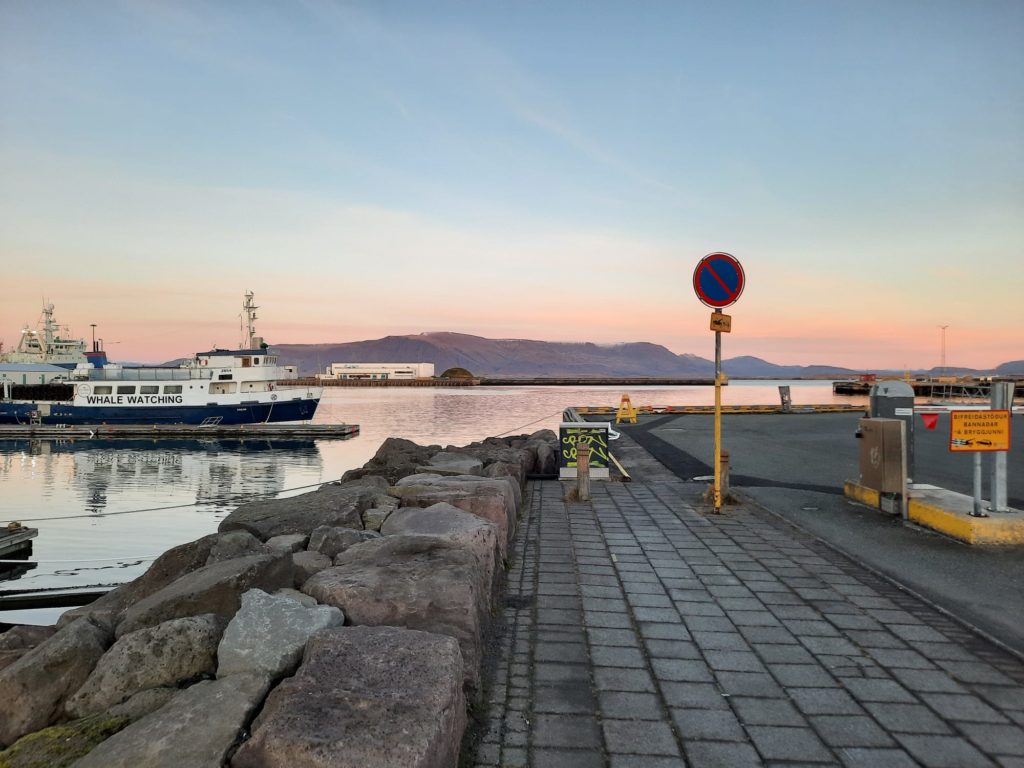
A Long Weekend in Reykjavik
The Salterton Arts Review recently had the opportunity to spend a long weekend in Reykjavik, capital city of Iceland. This wasn’t my first time heading to a Nordic country, as I have also visited Bergen in Norway. But it was my first time doing so in the colder months. As it turns out, late November is a lovely time to visit. There was daylight from about 10.30 AM to 4PM, and the low sun turned the sky soft with sunset hues. The beautiful pink and golden sky offset the early Christmas decorations perfectly: it was like living inside a snowglobe or a Hallmark movie.
The chillier weather did however mean more time indoors. And those of you who have read my blog before know that means one thing: museums. I went to a lot. A lot. When you see how many museum posts are coming up in the next few days you will find it hard to believe I packed everything into 3.5 days. I did get out and about as well, however, so there are sections below on the Northern Lights and some of the daytrip options.
Whatever your motivation in heading to Iceland, hopefully you will find something to inspire you below!
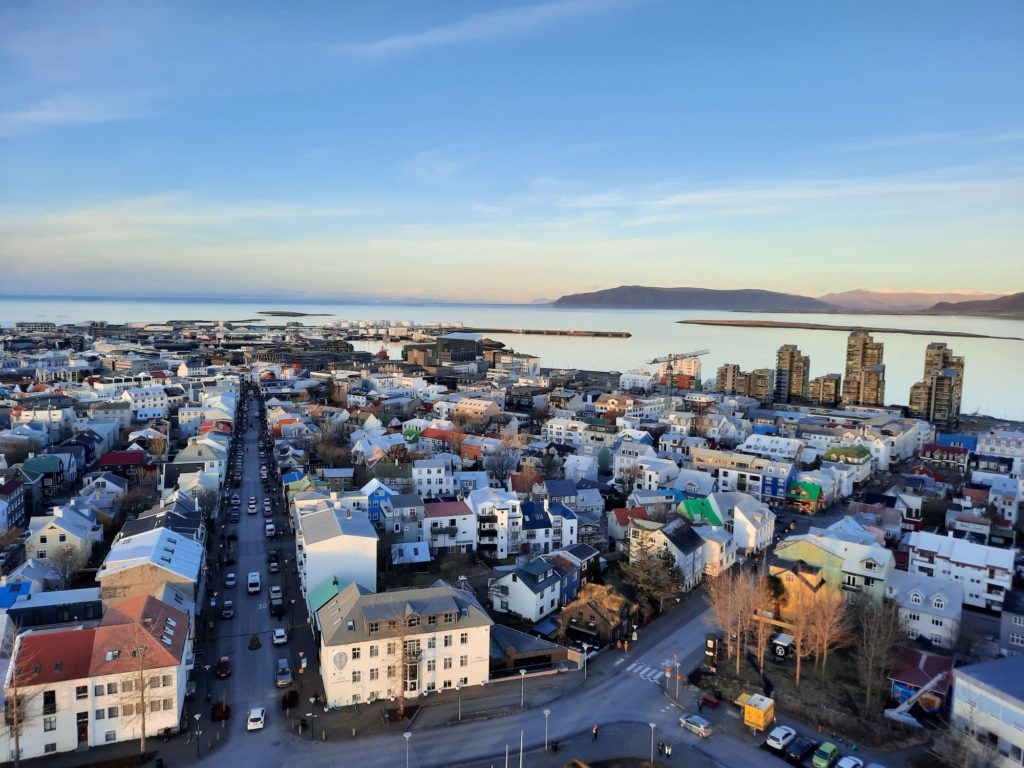
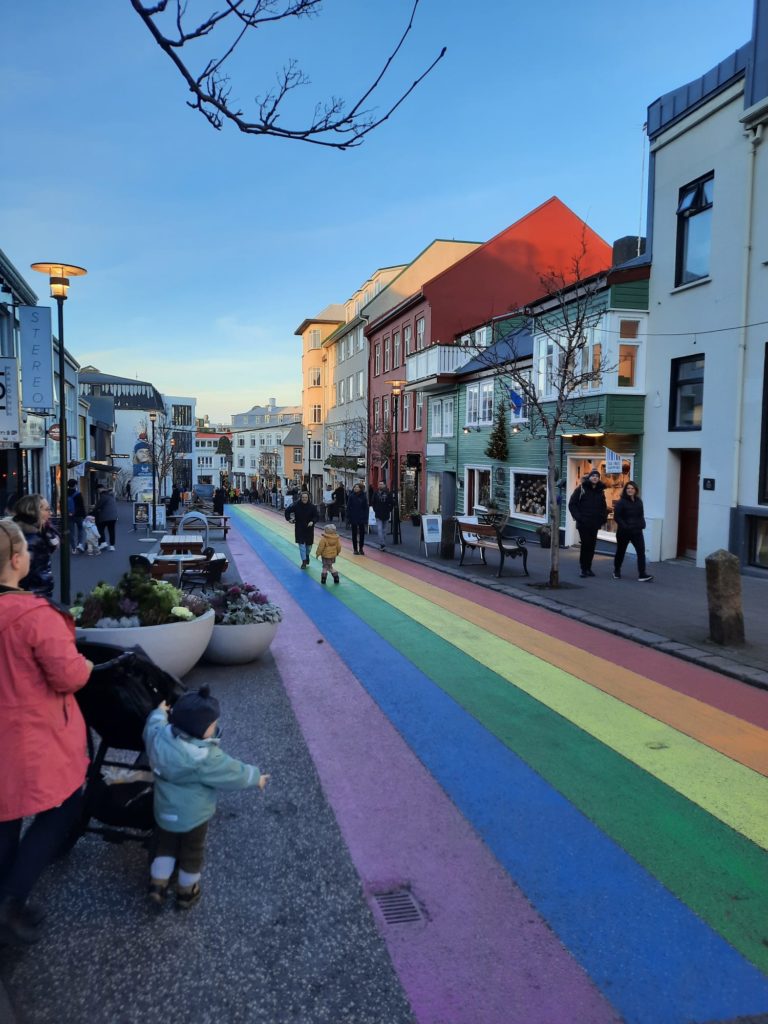
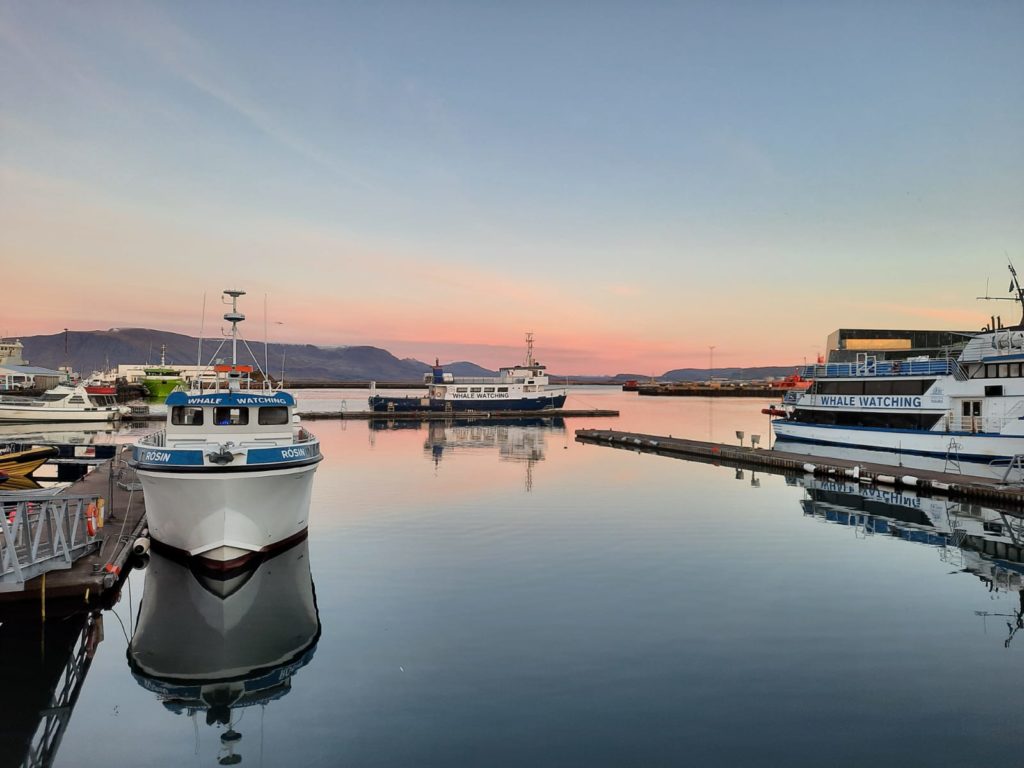
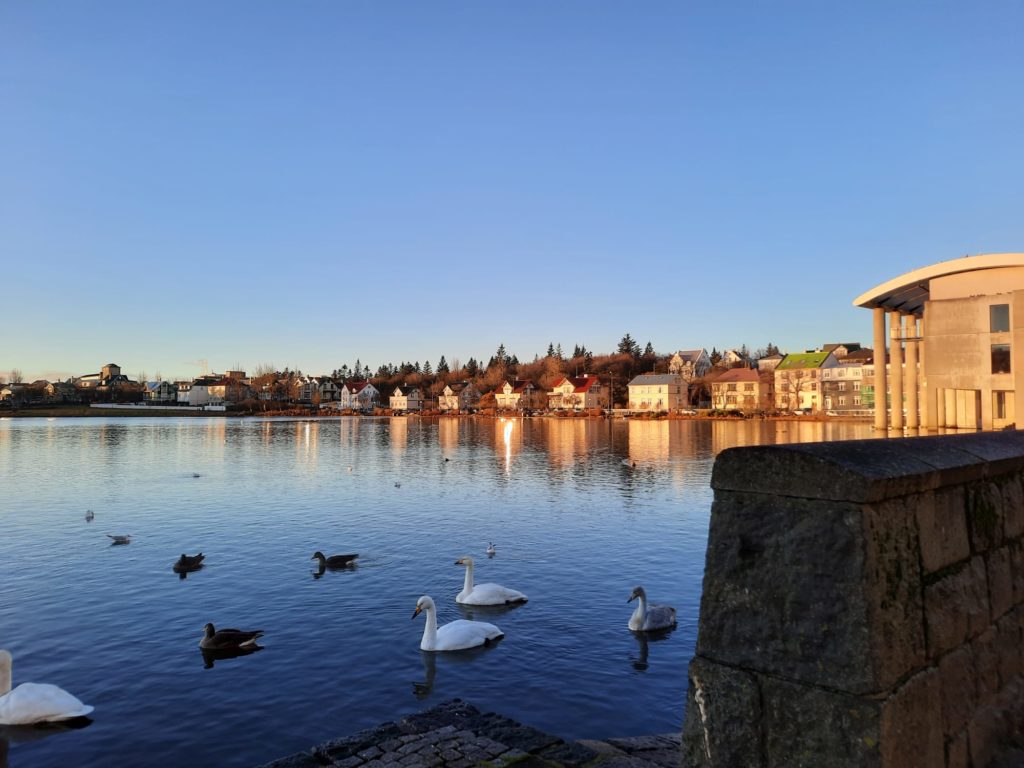
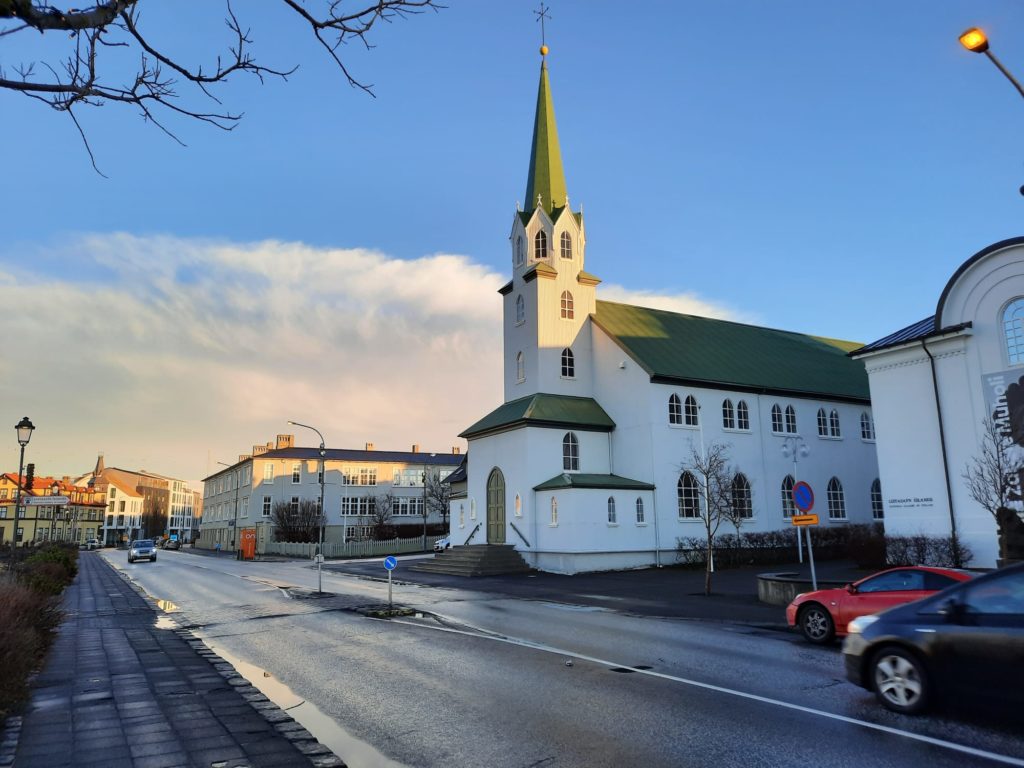
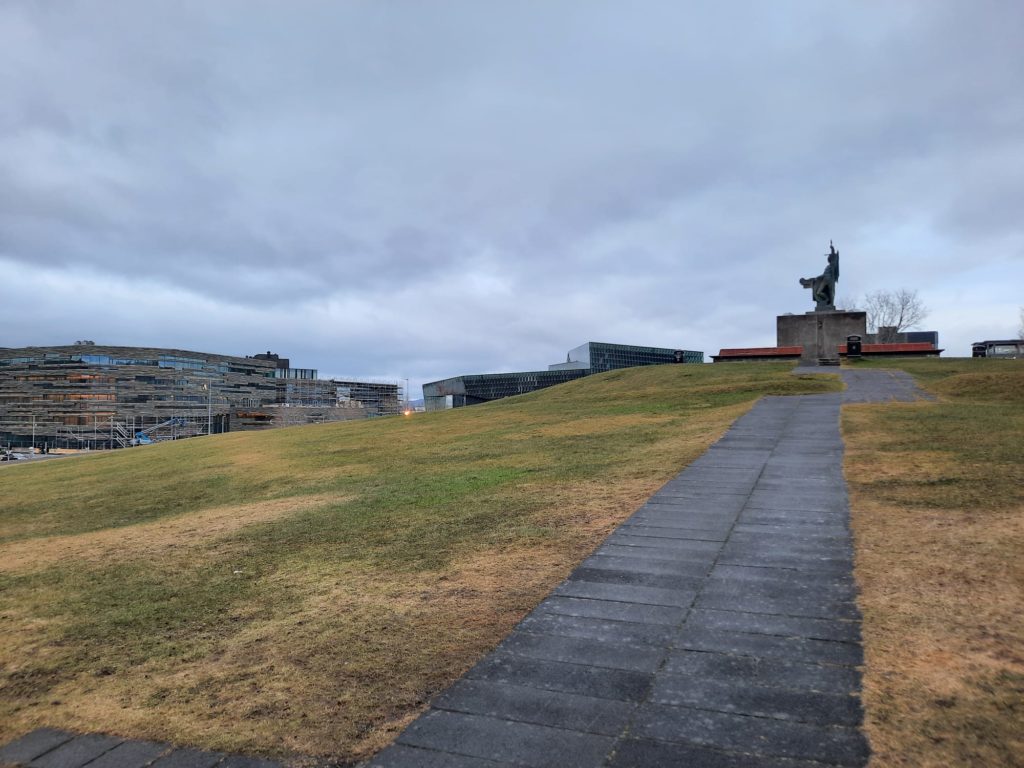
Getting Oriented In Reykjavik
Whatever your plans in Iceland, Reykjavik is likely your first stop. It is about 30 miles (50 KM) from Keflavik Airport – taxis will set you back over £100 but there are bus options which are more budget-friendly. Approximately two thirds of Iceland’s population of 372,000 live in the capital. The benefit of this is that Reykjavik has the amenities of a capital city while being a friendly and walkable size.
The city has a couple of focal points. There is Tjörnin, meaning ‘The Lake’ or ‘The Pond’, a pleasant spot with several restaurants and museums. The harbour again has some nice restaurants, as well as being the departure point for whale-watching tours. And there is Arnarhóll, a grassy hill where events and gatherings tend to take place. Hotels are dotted all over: I stayed in the Grandi neighbourhood, which is close to the harbour and a former industrial area undergoing gentrification. This is at one end of the central city, but I had no trouble getting to Hallgrímskirkja at the other side on foot.
For those who don’t feel like walking or aren’t lucky with the weather, there are bus options. Like many cities there is a Hop On/Hop Off bus which takes in the main tourist sights. There are also public buses: I took one to get to an open air museum a little out of the centre. Frankly these are a bit of a pain: you have to download an app or pay in exact change. However, Reykjavik is on Citymapper which at least makes the timetables easy.
For my late November visit, the options to entertain myself were: museums, cafes and restaurants, excursions by boat, day trips, shopping, and Northern Lights tours. I had time for almost all – 3.5 days was enough to tick a few things off my bucket list, although I could also have filled one or two additional days.
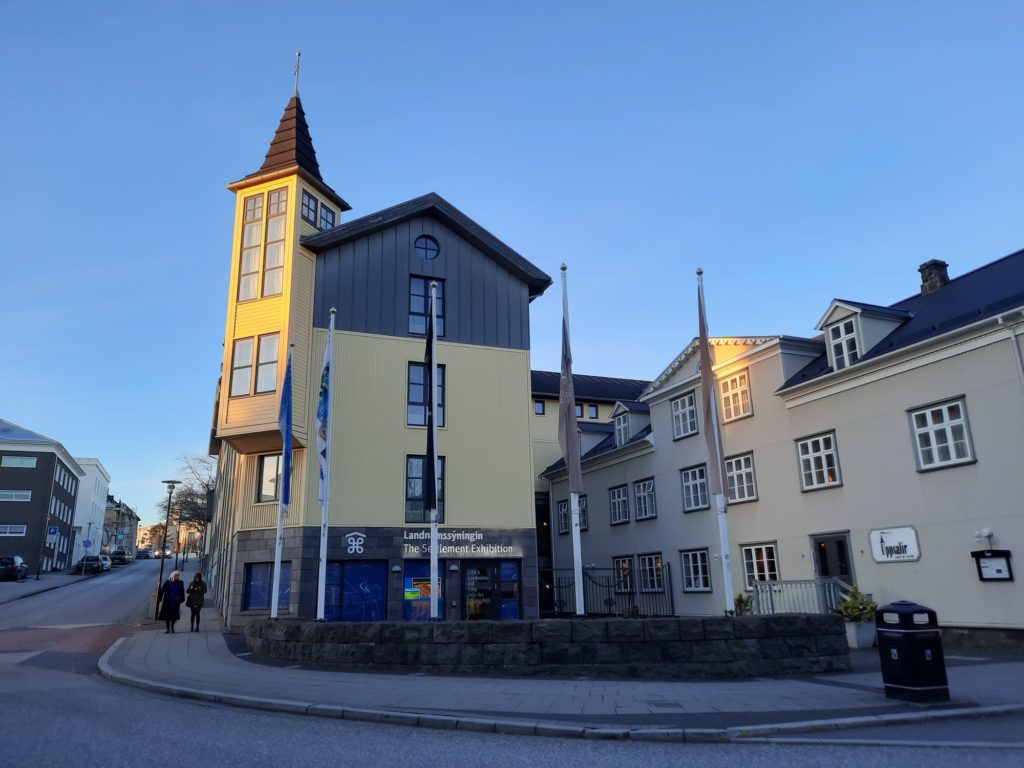
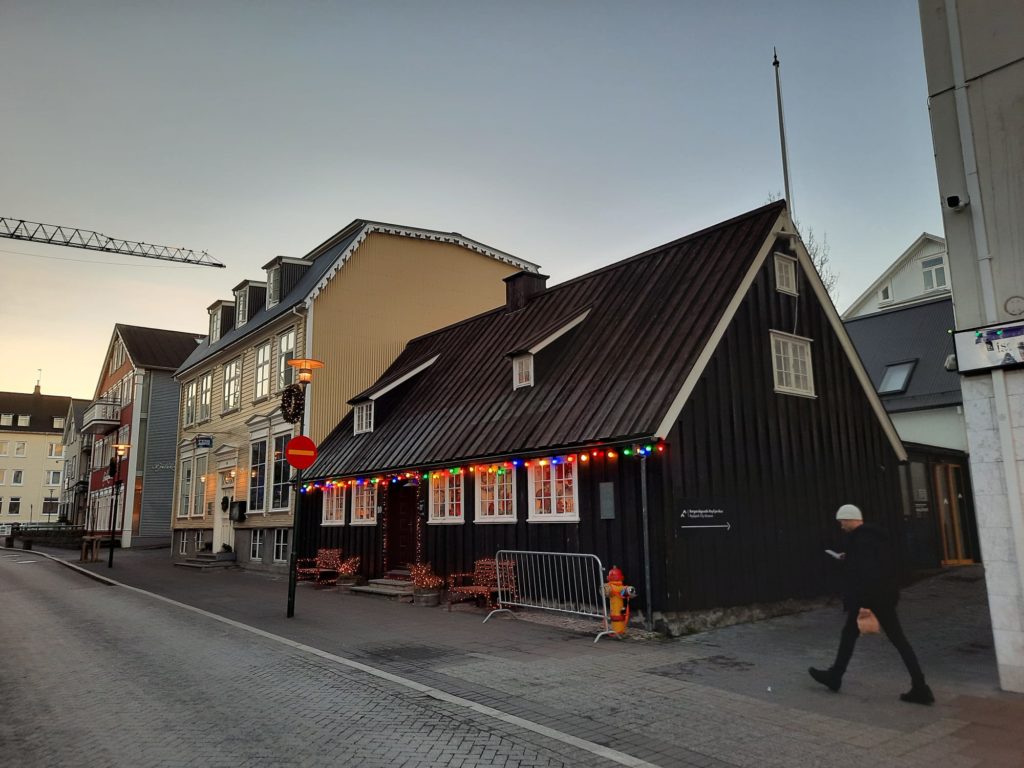
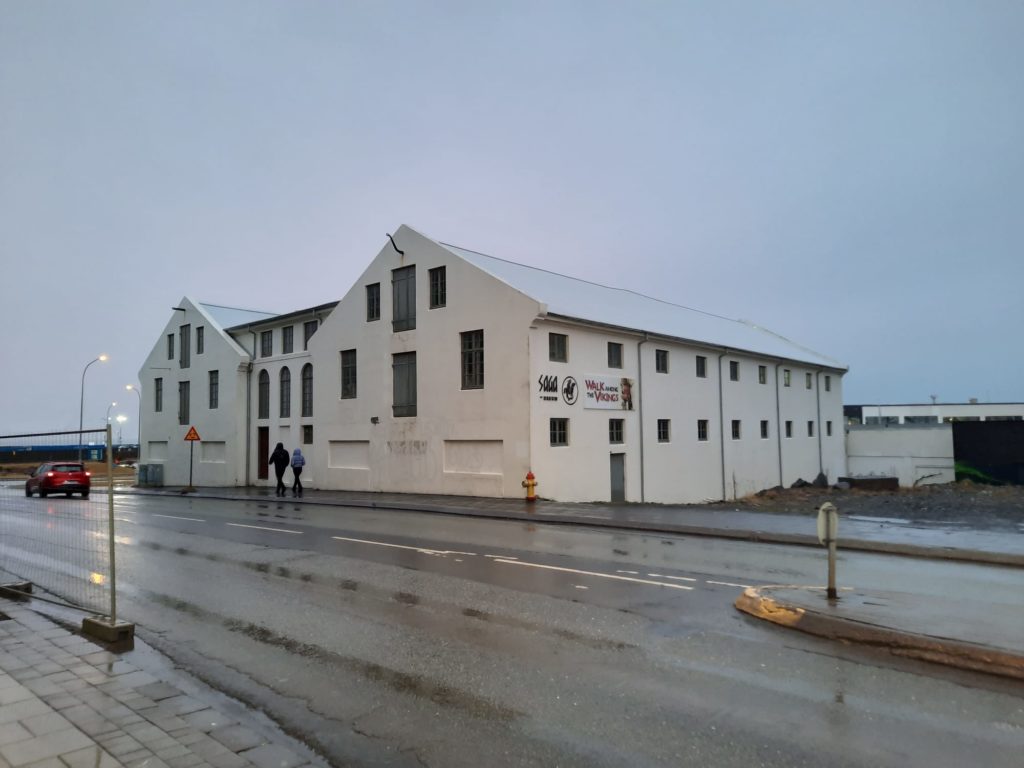
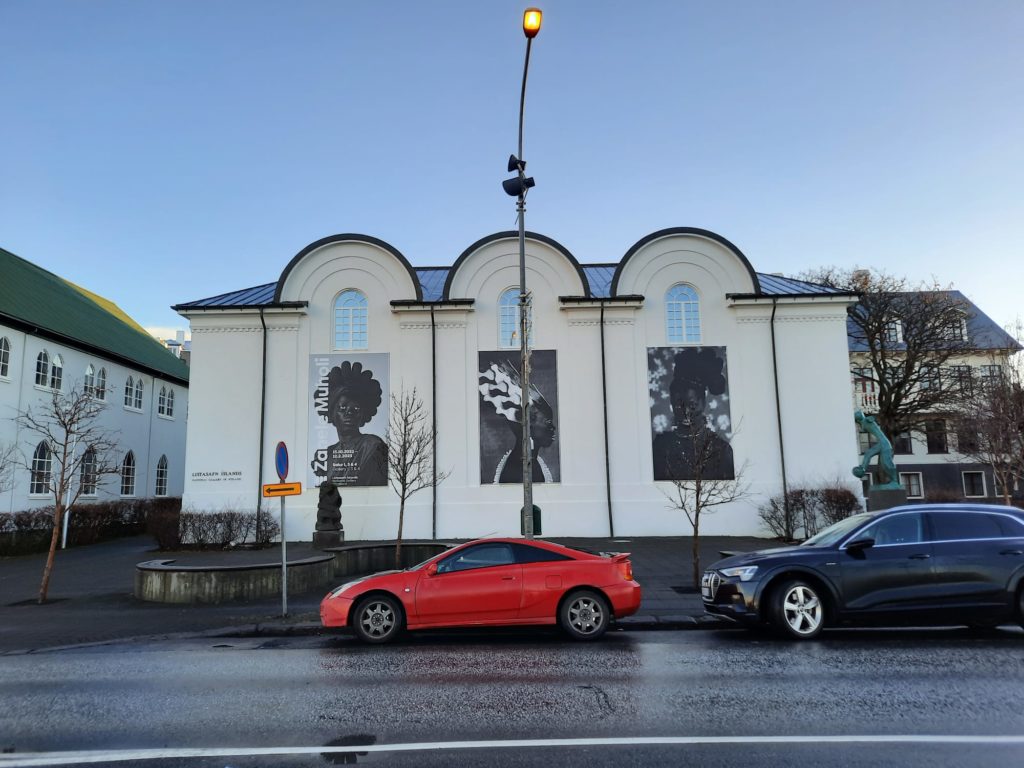
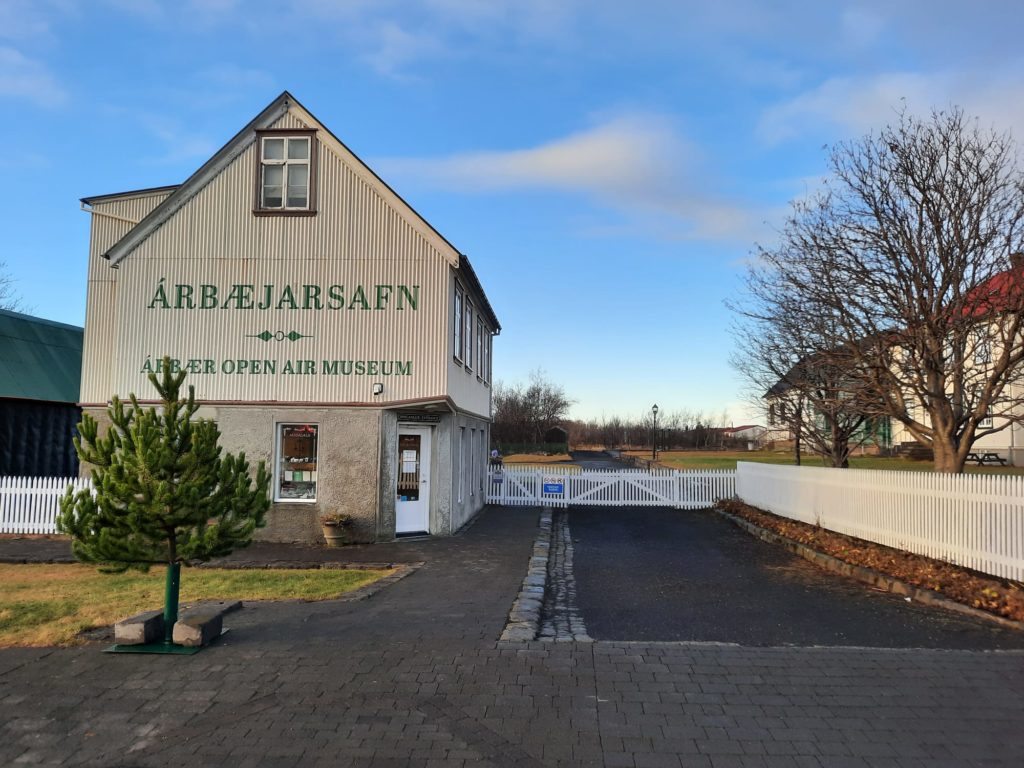
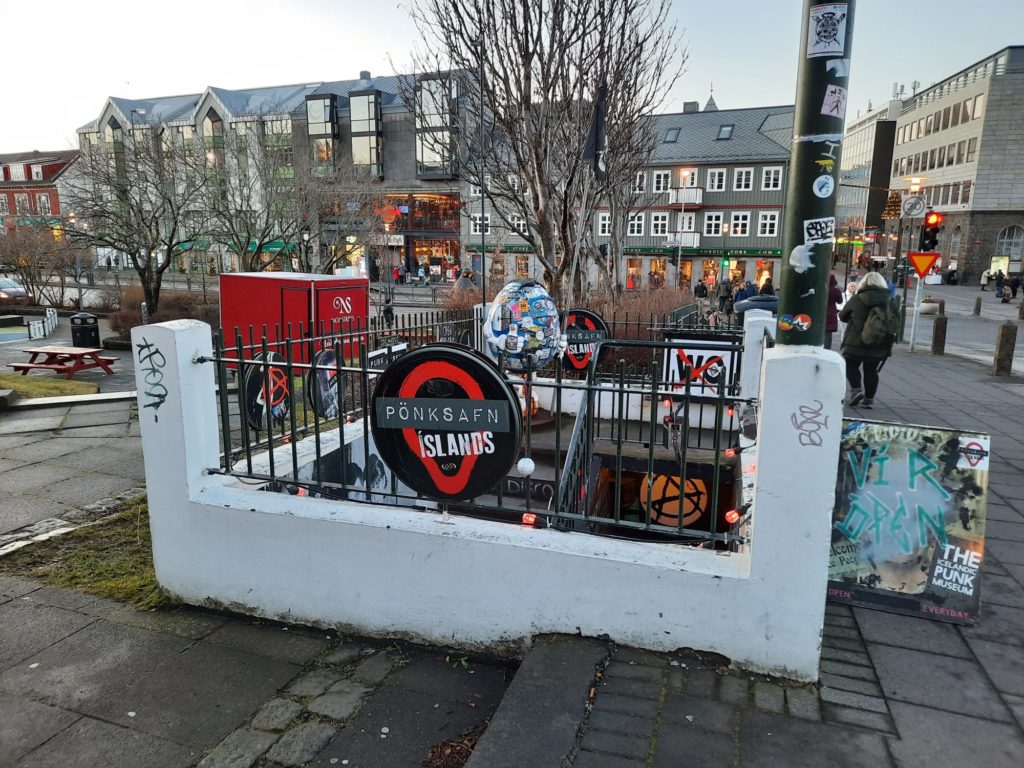
Museums
So as I mentioned earlier, I went to A LOT of museums. Each will have its own post in the coming days. The museums in Iceland run the gamut. There are the normal national institutions such as the National Gallery of Iceland and National Museum of Iceland. Plus there is a group of city museums. There are the quirky museums like the Icelandic Phallological Museum (Penis Museum) and Icelandic Punk Museum, the latter housed in a disused public toilet. There are touristy ones and serious ones. Arty ones and history ones. There are several institutions (like Perlan or Aurora Reykjavik) which are experiential, what you might call museum-adjacent.
To be honest I didn’t have a firm favourite. I was a little disappointed with some of the big ones (the National Gallery of Iceland didn’t have any Icelandic art when I visited). Some of the little quirky ones were fun. In the end I enjoyed learning more about a city and country that I knew relatively little about. And warming up indoors when I was getting too cold for sightseeing. My advice would be to go with your instincts and seek out the subject matter that interests you most. The experiential ones are better for families, but the concentration of museums in Reykjavik is relatively high so there should be something for every taste.
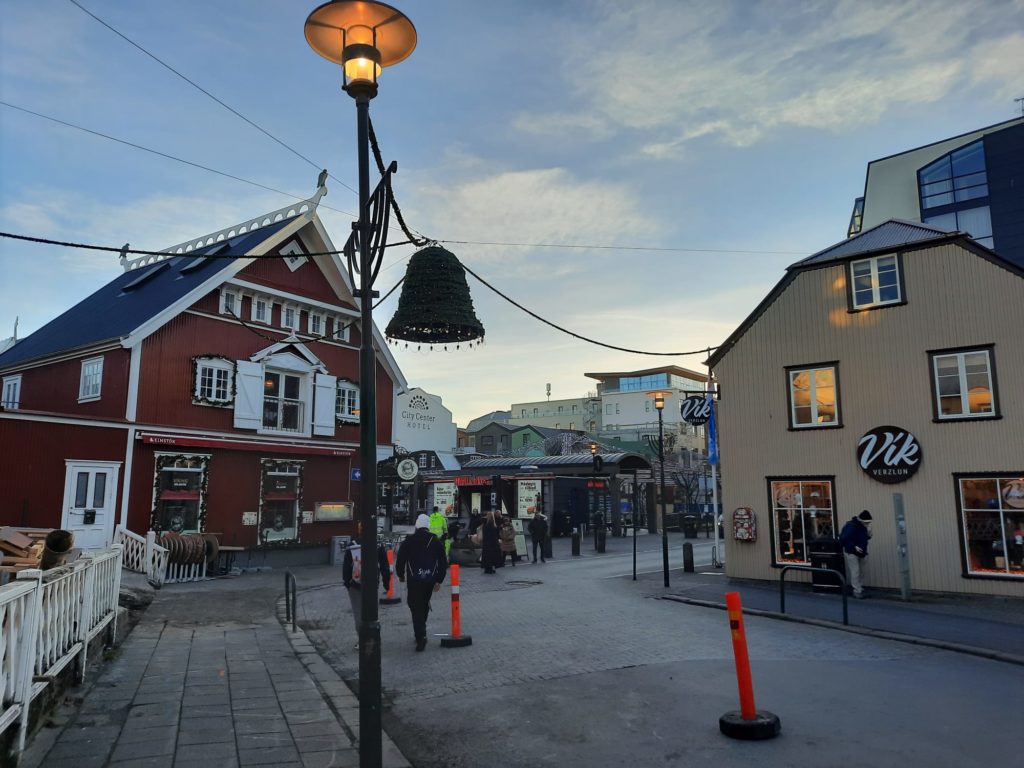
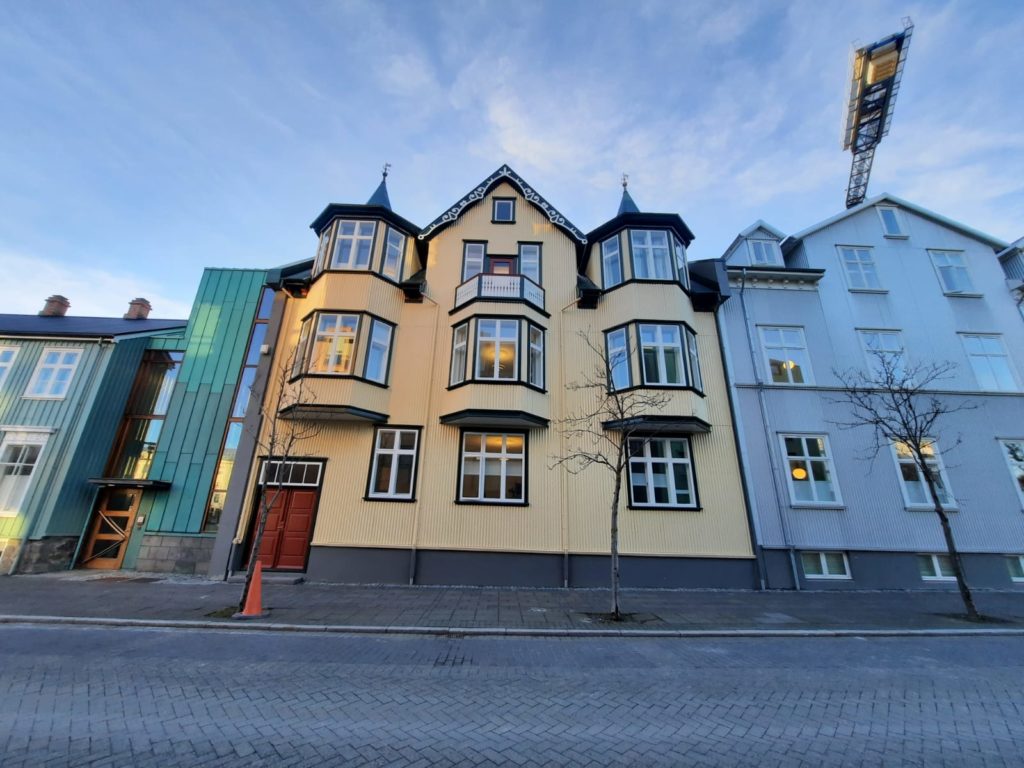
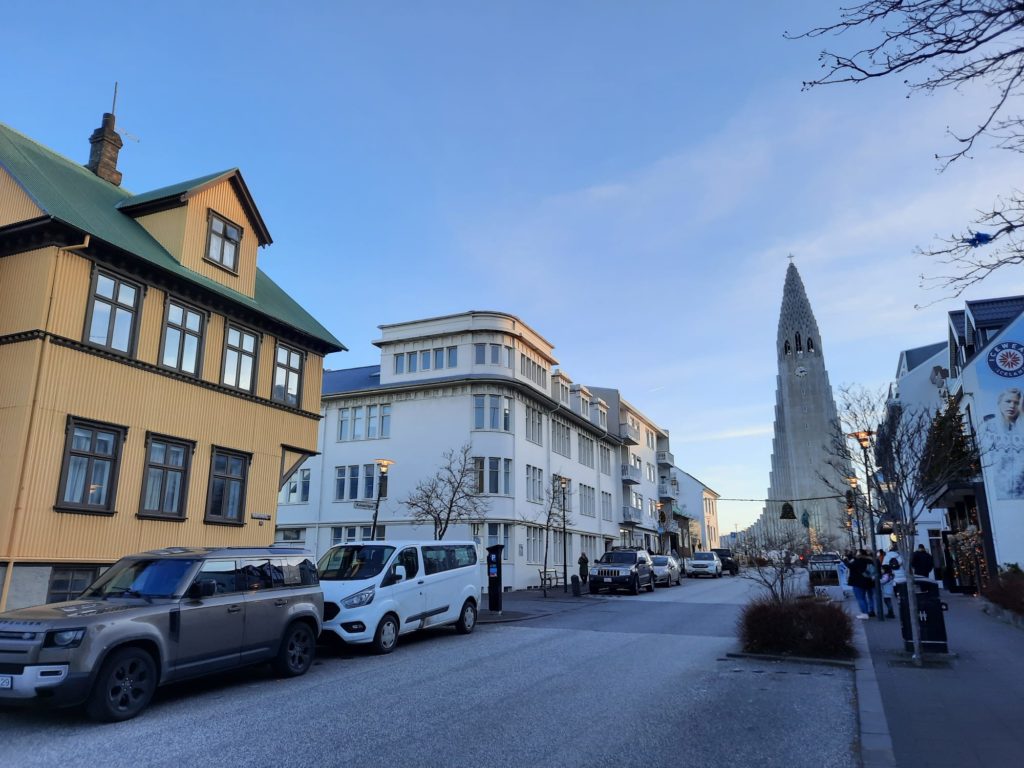
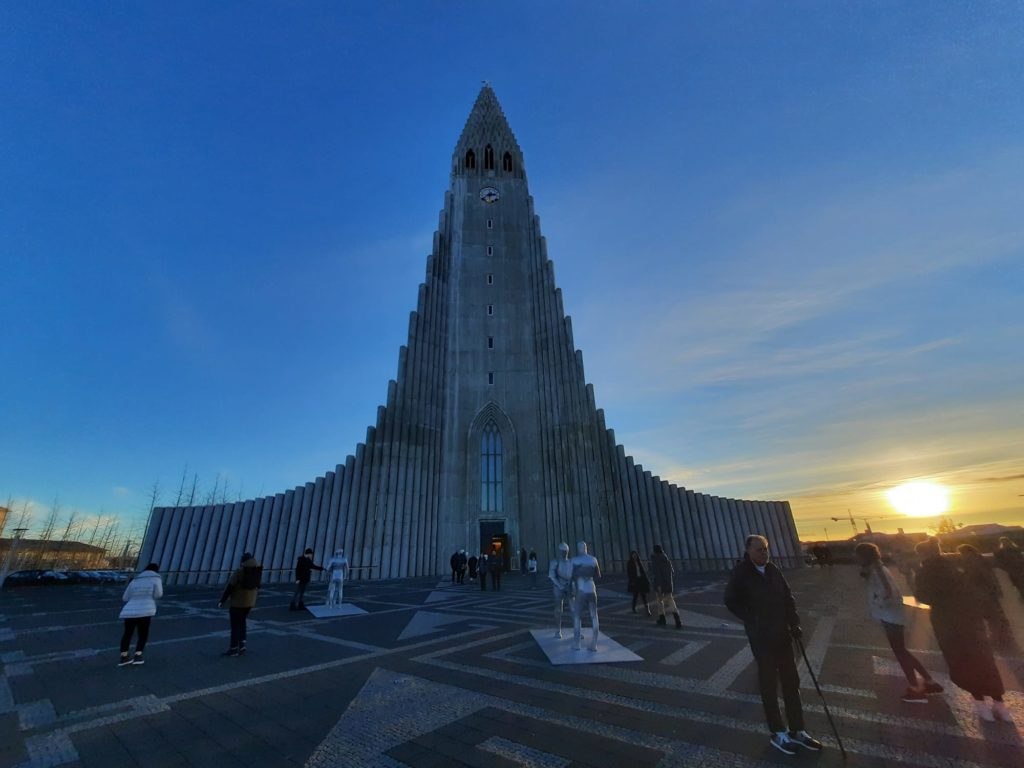
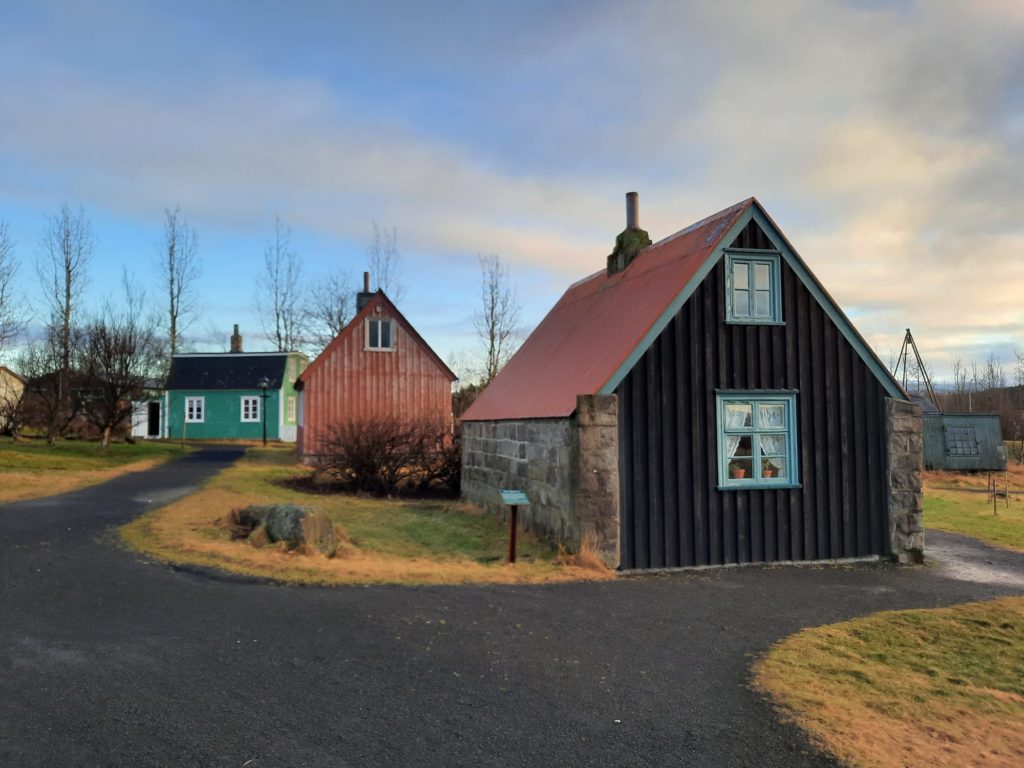
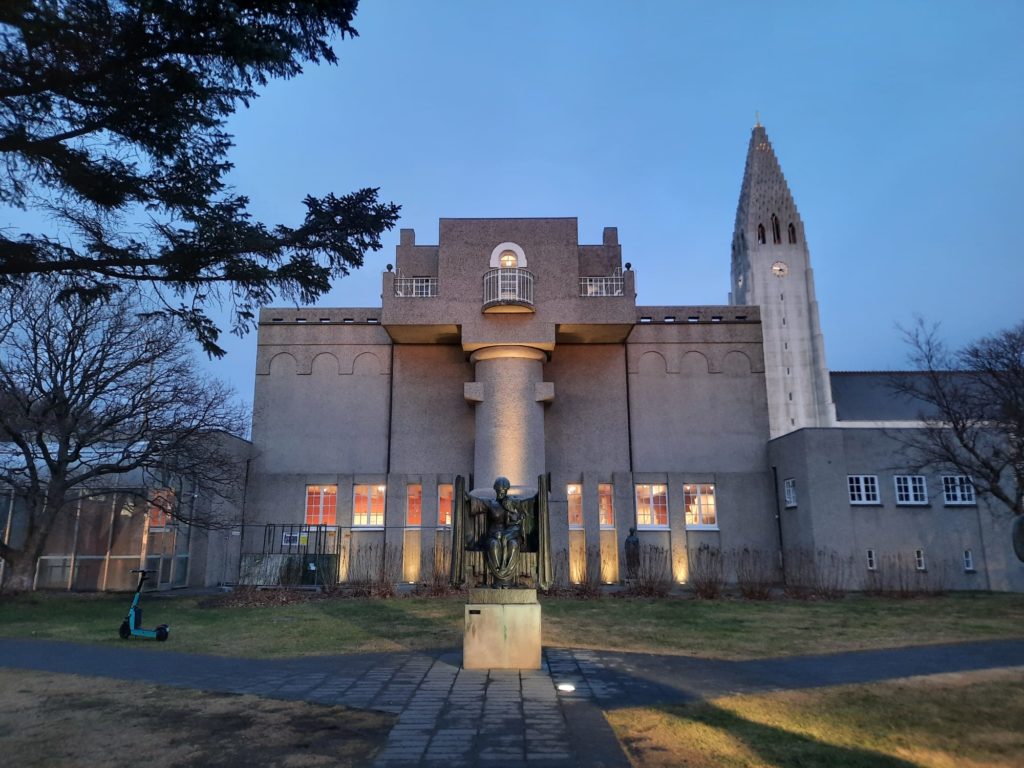
Architecture
I always like to take a look at the architecture of the places I visit: in Iceland I feel it reveals a lot about the city’s (and country’s) history. You see, Icelanders moving away from traditional ways of living is a fairly recent thing. It’s really not that long ago that turf houses were the norm. Those with animals often had living quarters above them for the sake of the heat. And fishermen’s dwellings were known as ’empty houses’ because of the lack of animals within.
Modernisation in Reykjavik initially meant moving from turf to stone, although the structure of the house, low with thick sections at the bottom of the walls, was similar. Later, lots of corrugated metal can be seen. For me this is what gave Iceland the feeling of being at a frontier. It sparked my imagination, conjuring documentaries and images I’ve seen of outposts in Greenland or Alaska. If you’re interested in seeing traditional houses there are plenty of examples dotted around town (including Aðalstræti 10 which is set up as a museum). Or you can head a little further out of town to the Árbær Open Air Museum where a lot of older buildings have gathered to enjoy a quiet retirement.
There are examples of more modern Icelandic architecture to be found as well. Hallgrímskirkja is the most obvious example: a Lutheran church completed in 1986, shooting up like a rocket ship on the skyline. For a small sum you can take the elevator to the top of the tower and really take in the city views. Nearby is another example of modern architecture: the Einar Jónsson Museum. The building, dating to 1923, has quite a Jugendstil feel and is the work of architect Einar Erlendsson. The National Theatre gives off similar vibes. For contemporary statement architecture, the concert hall Harpa is undoubtedly the main draw.
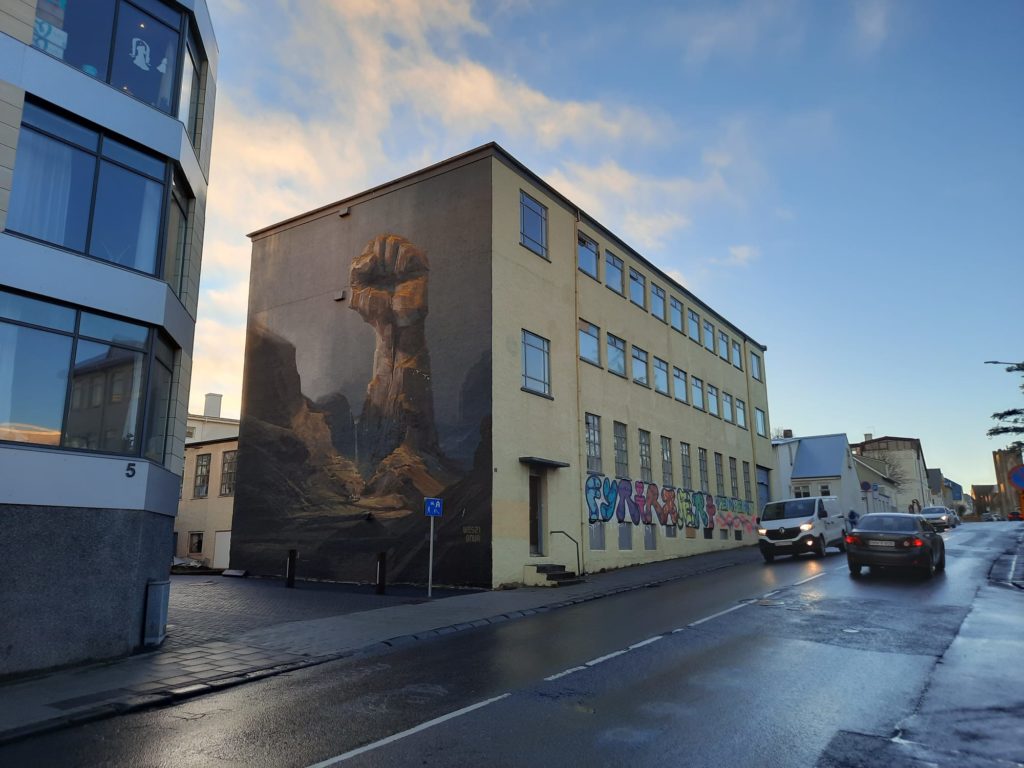
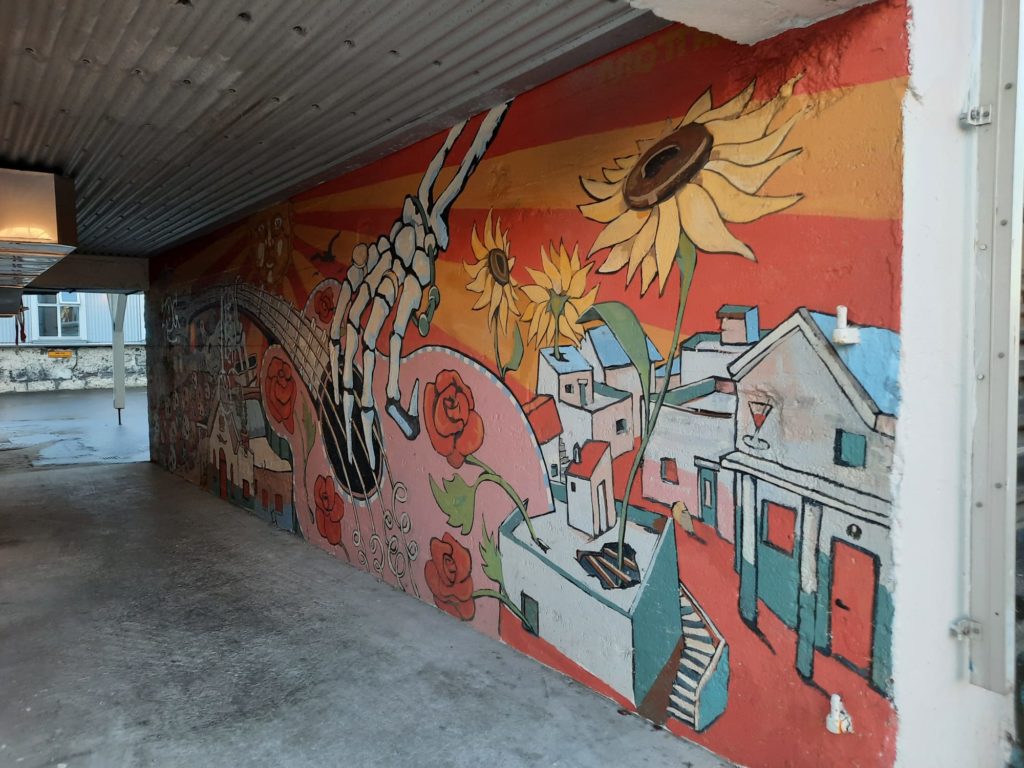
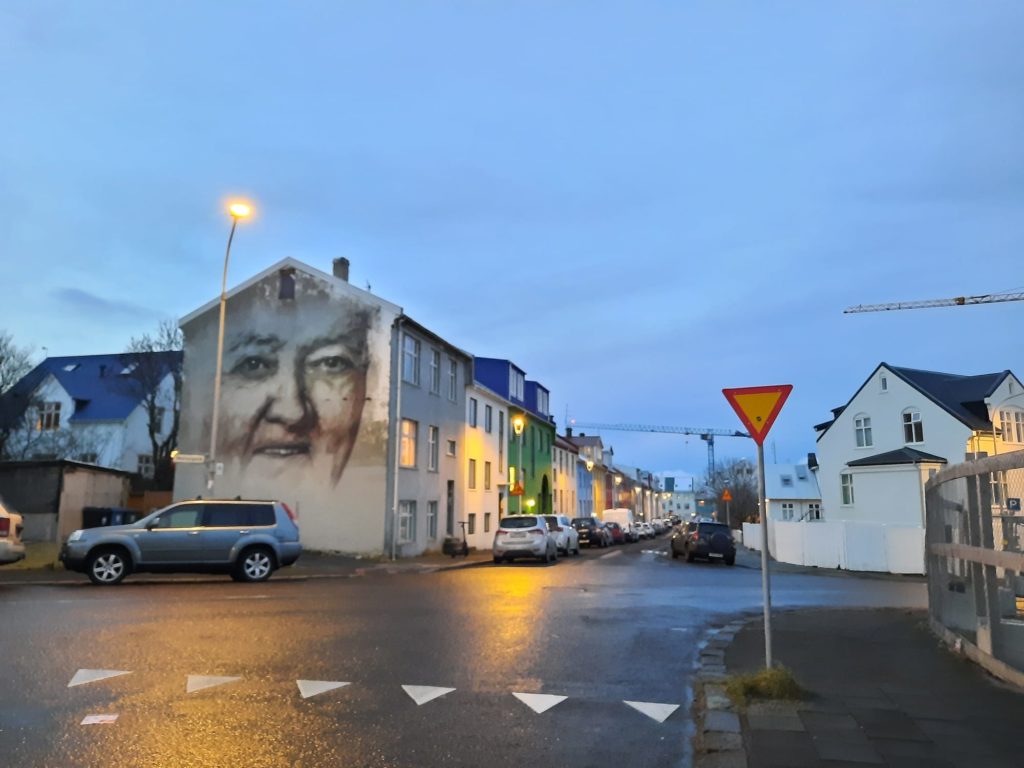
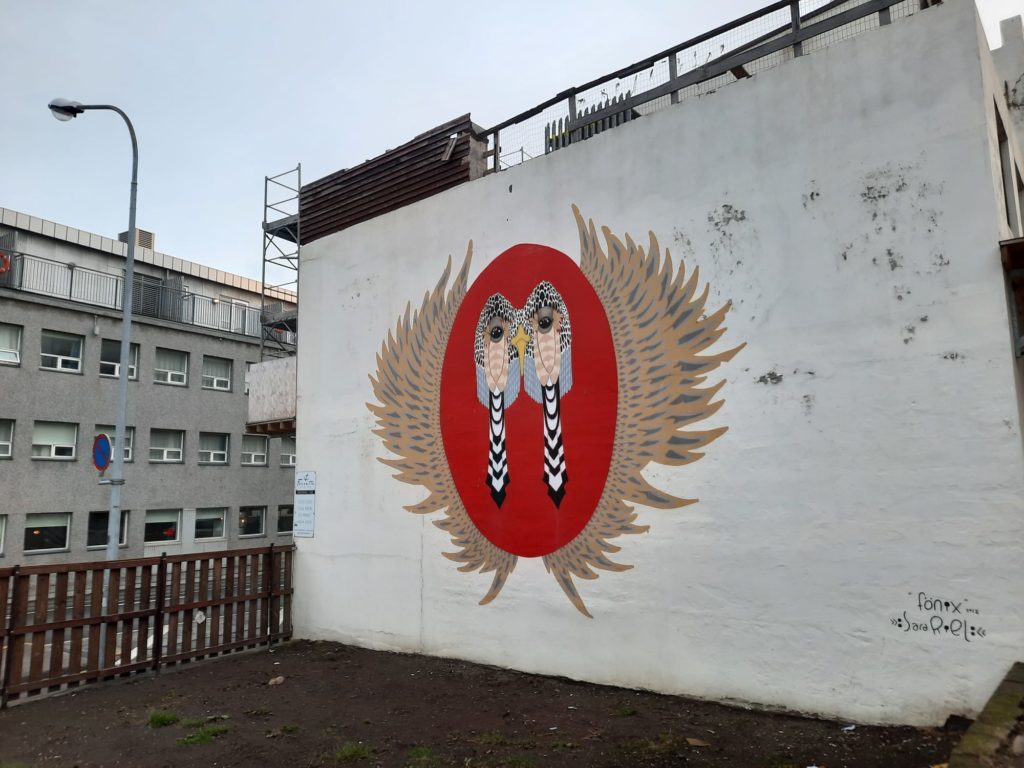
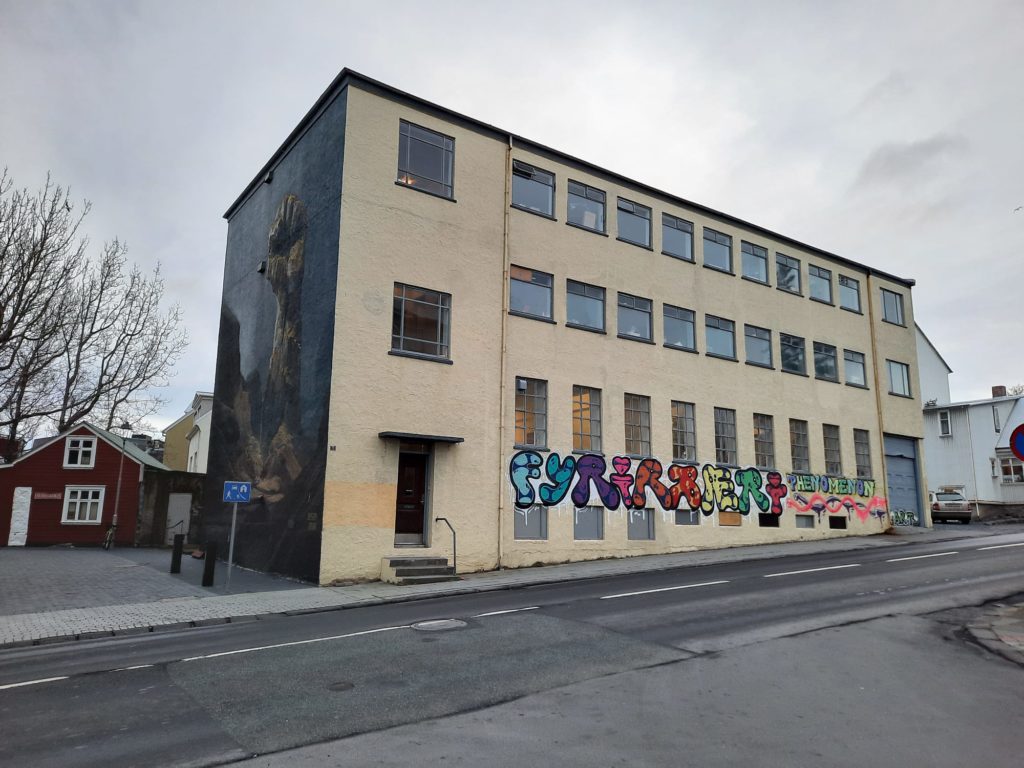
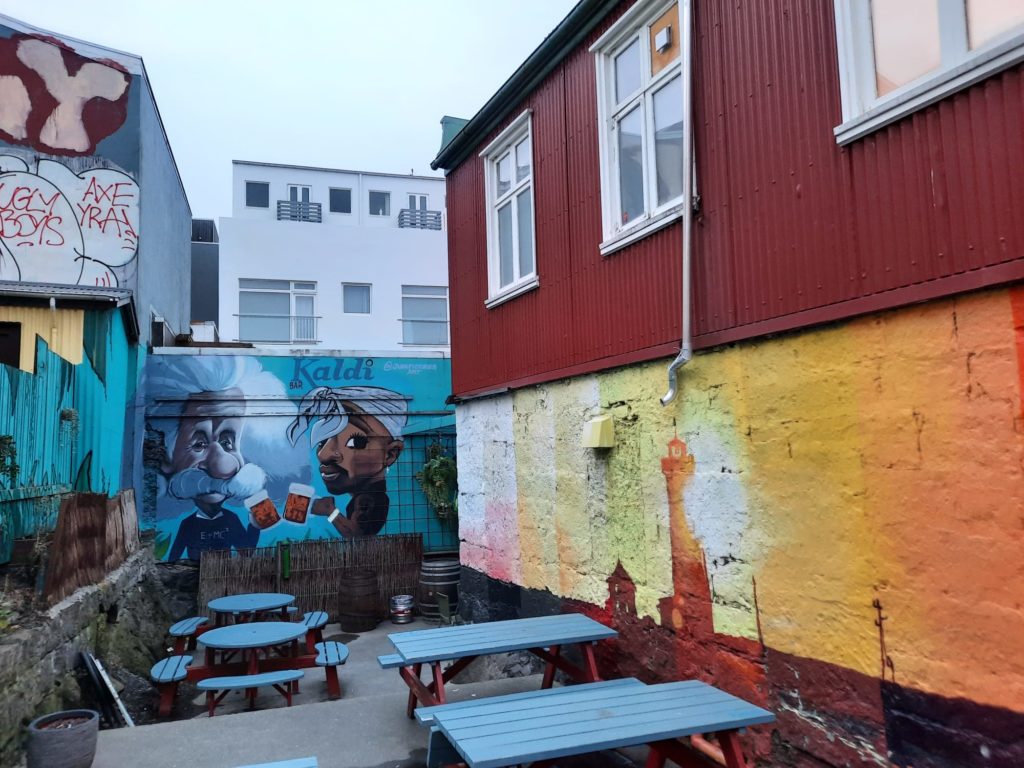
Street Art
Reykjavik is a great spot for street art. Murals abound and can be spotted even off the tourist trail in more residential streets. There are also numerous tags by different street artists. I was only a casual spotter of murals while in Reykjavik and didn’t go out to look for the best examples (maybe that’s an activity for the summer months). But you can find out more about it here: look out for walking tours as well if this is your jam.
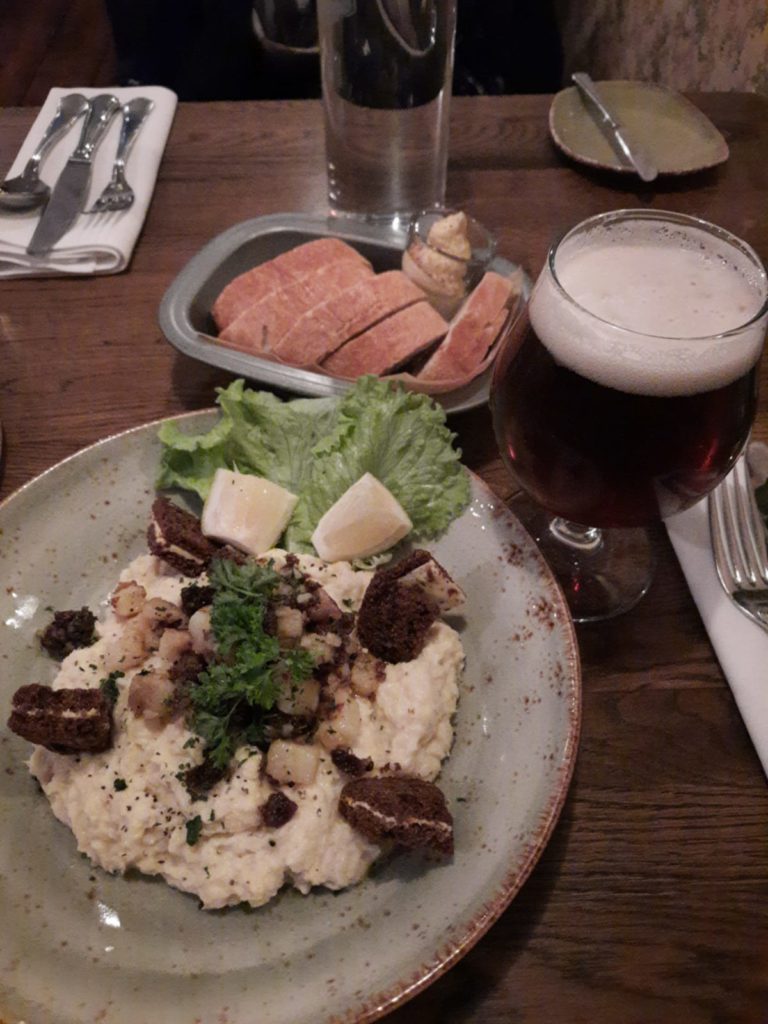
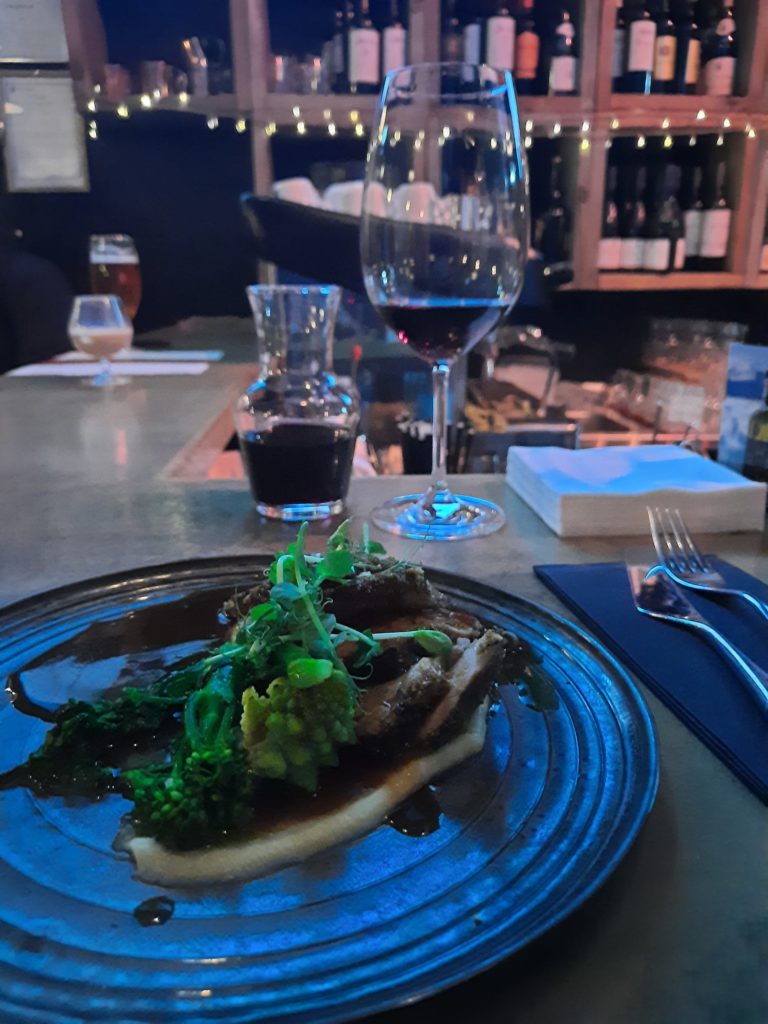
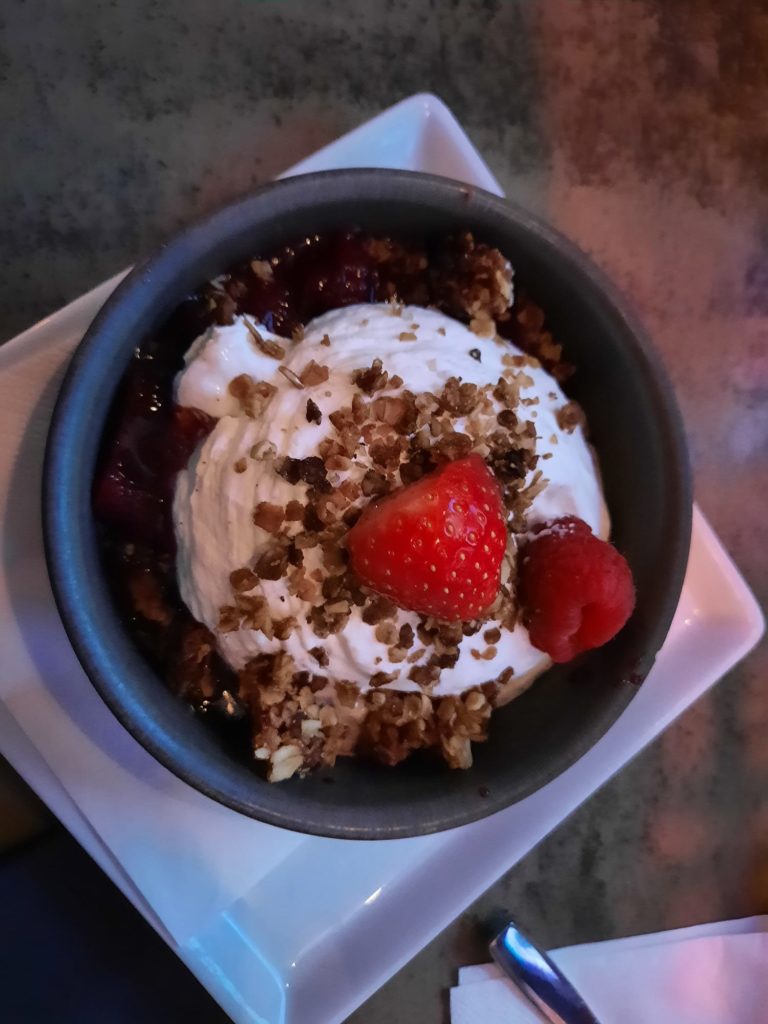
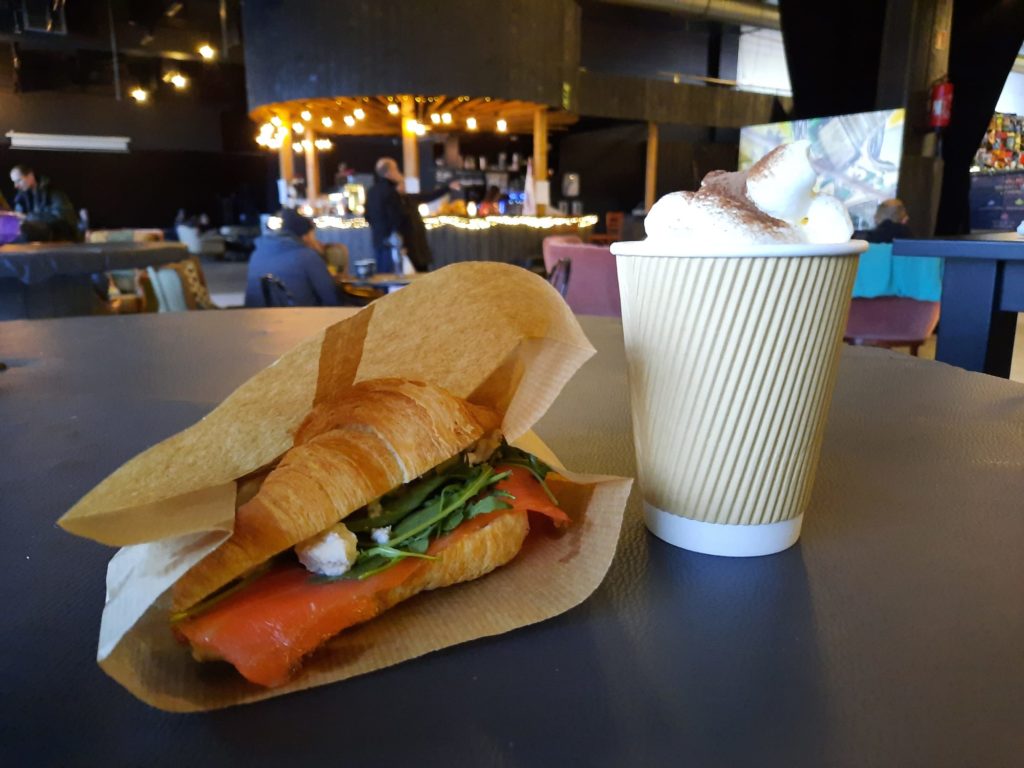
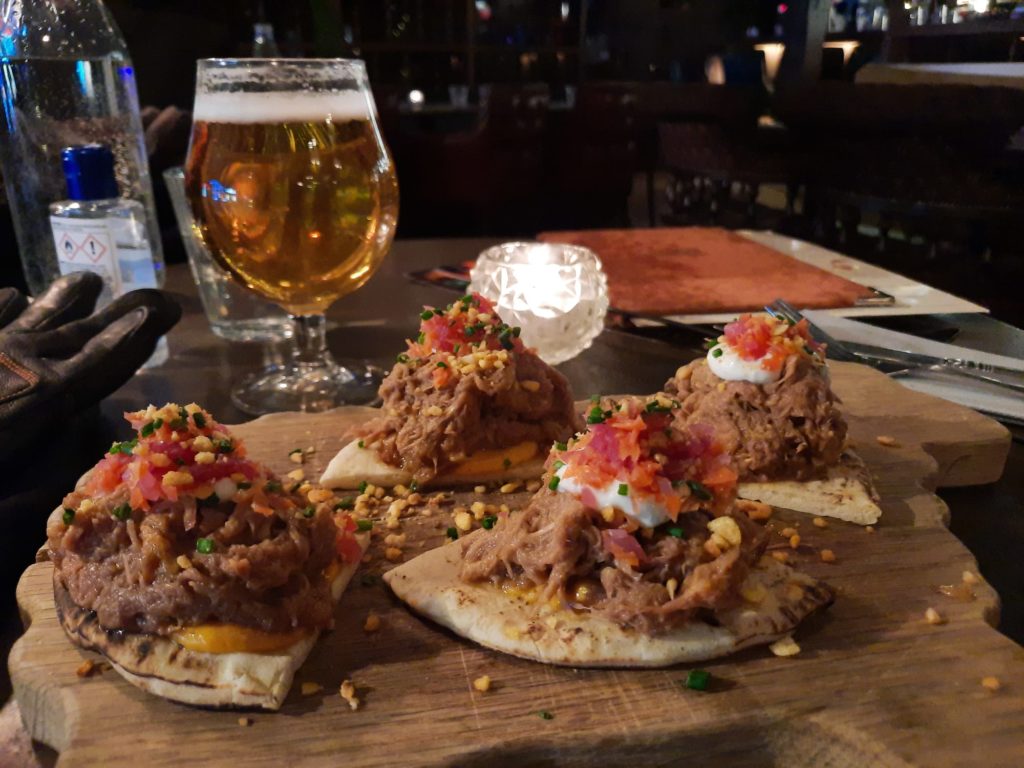
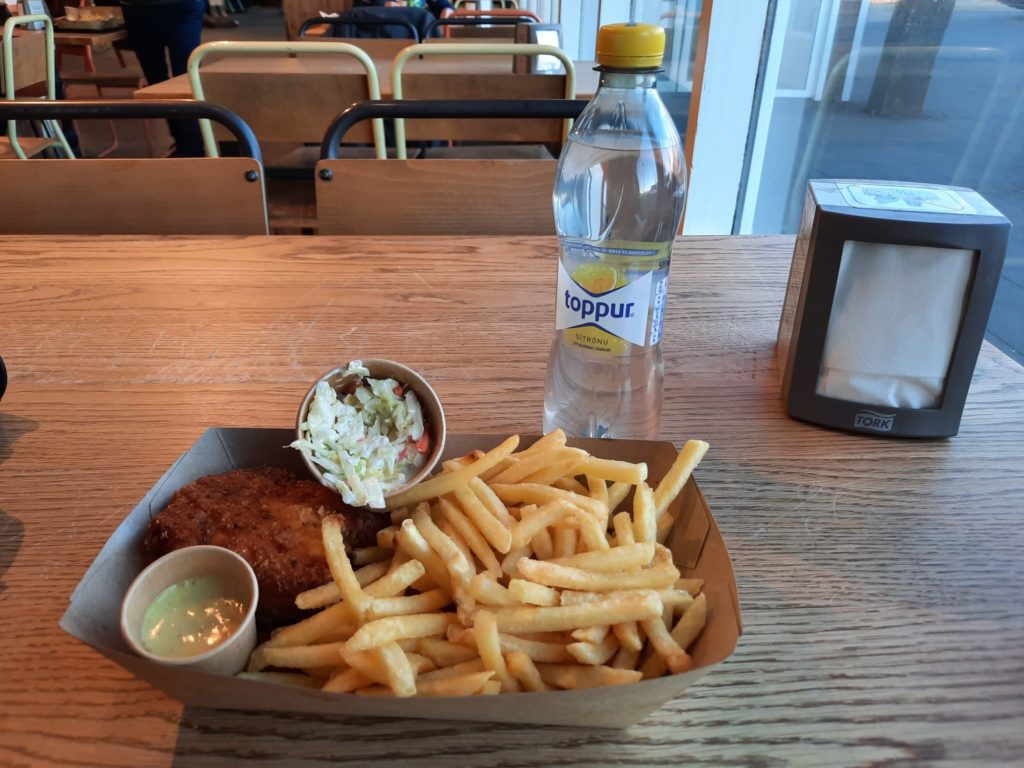
Food and Drink
Iceland is not the cheapest of destinations. Prices for most things are high, and things like alcohol especially so. However, the quality of the restaurants seems mostly to be as high as the price point so it’s not a bad trade off.
Traditional Icelandic food involves a lot of fish and lamb. This is reflected in Reykjavik’s restaurants, and in a lot of my menu choices. A tasty bowl of Plokkfiskur (fish stew) here, a lamb chop there. Fish and chips when on the move. A bit of skyr for dessert. Delicious! There are more exotic menu options, ranging from horse and reindeer to the much more ethically dubious puffin and whale. Tourists are actually the biggest consumers of whale meat in Iceland and there is a campaign to raise awareness and put an end to the practice. For my money there are so many other tasty options – don’t do it for the novelty value.
One of my favourite restaurants during my time in Reykjavik was Höfnin by the harbour. I had a warm welcome, nice views, and tasty food. Nearby was Forréttabarinn, with equally good food but more of a casual bar atmosphere. Wherever you go, if you’re there in November/December I recommend trying the Christmas beers – every brewery seems to do one.
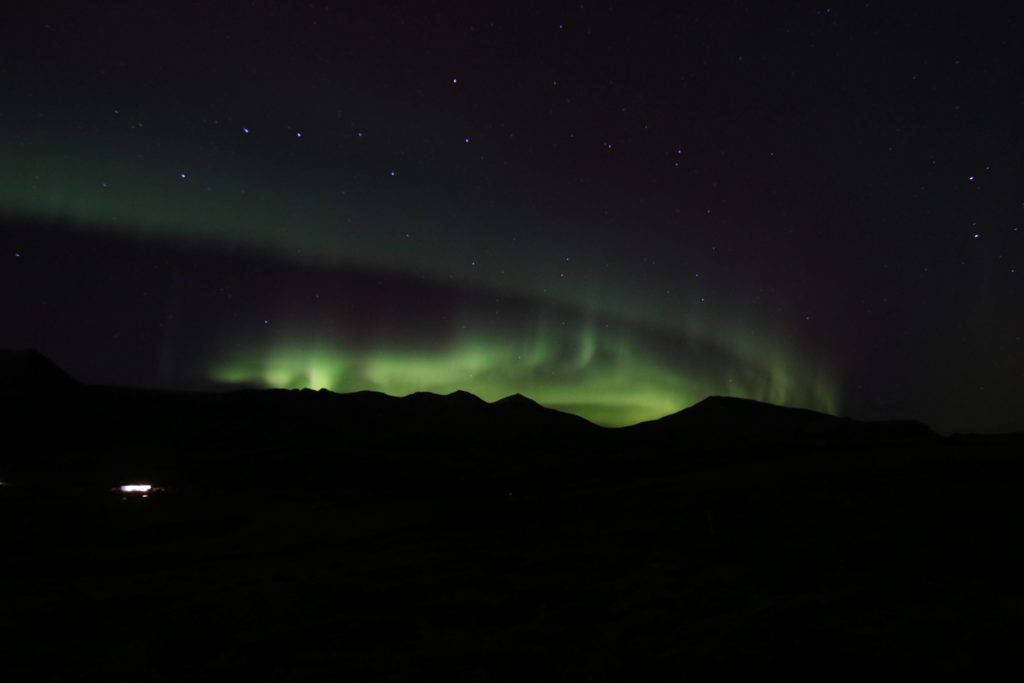
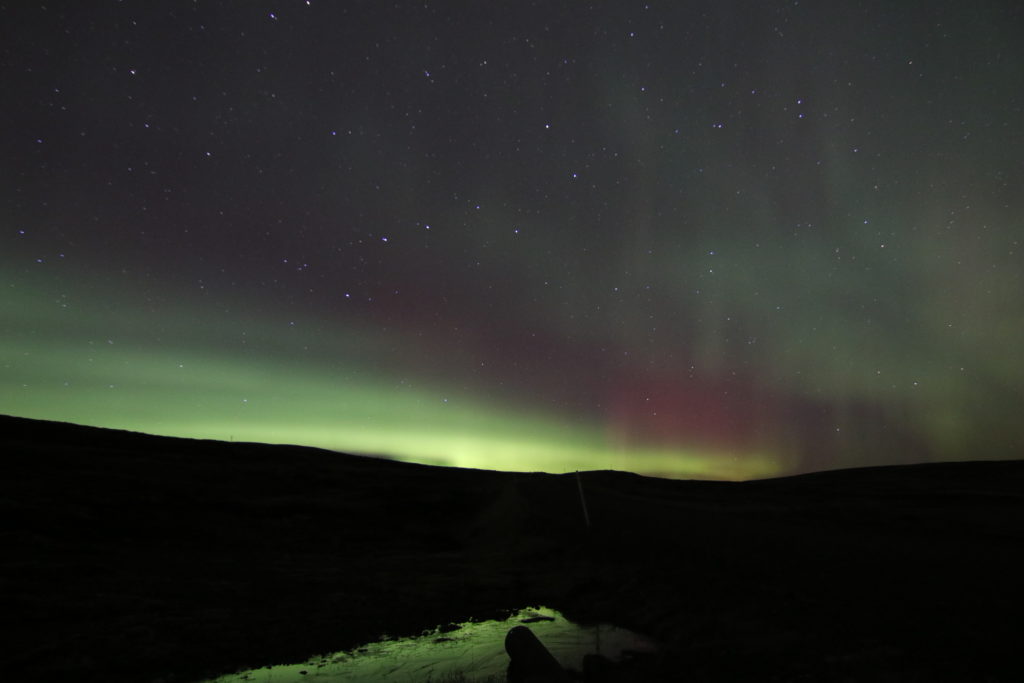
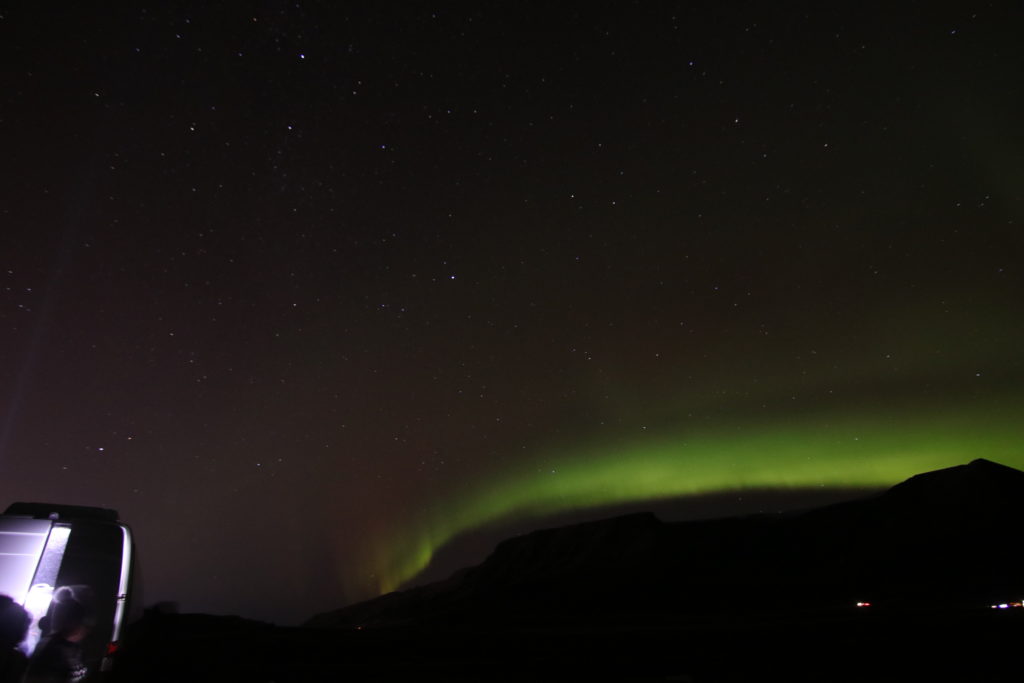
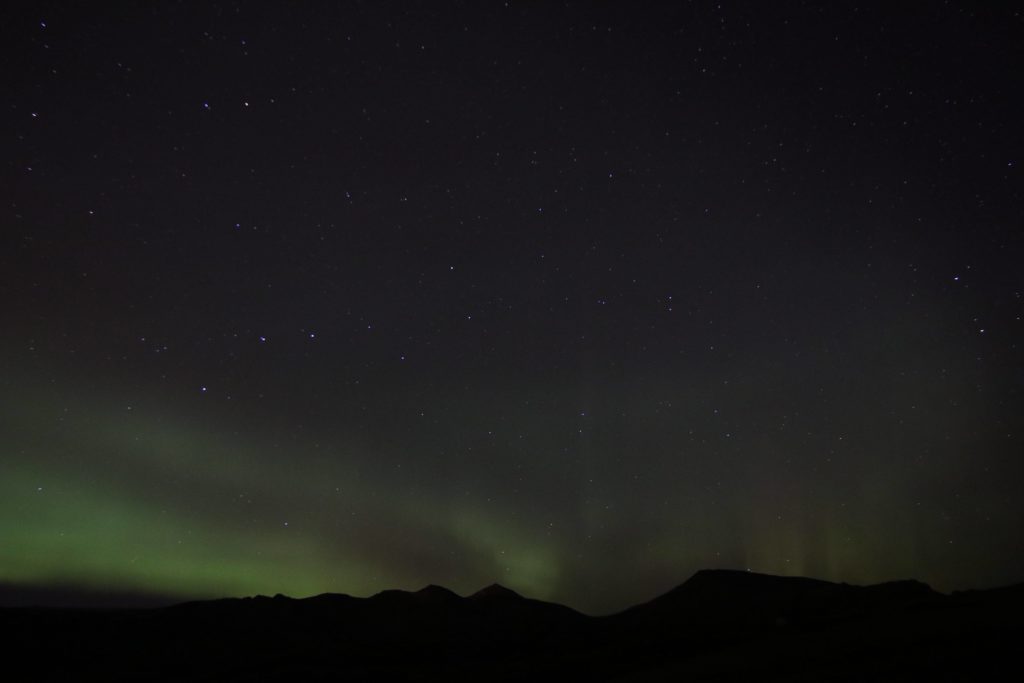
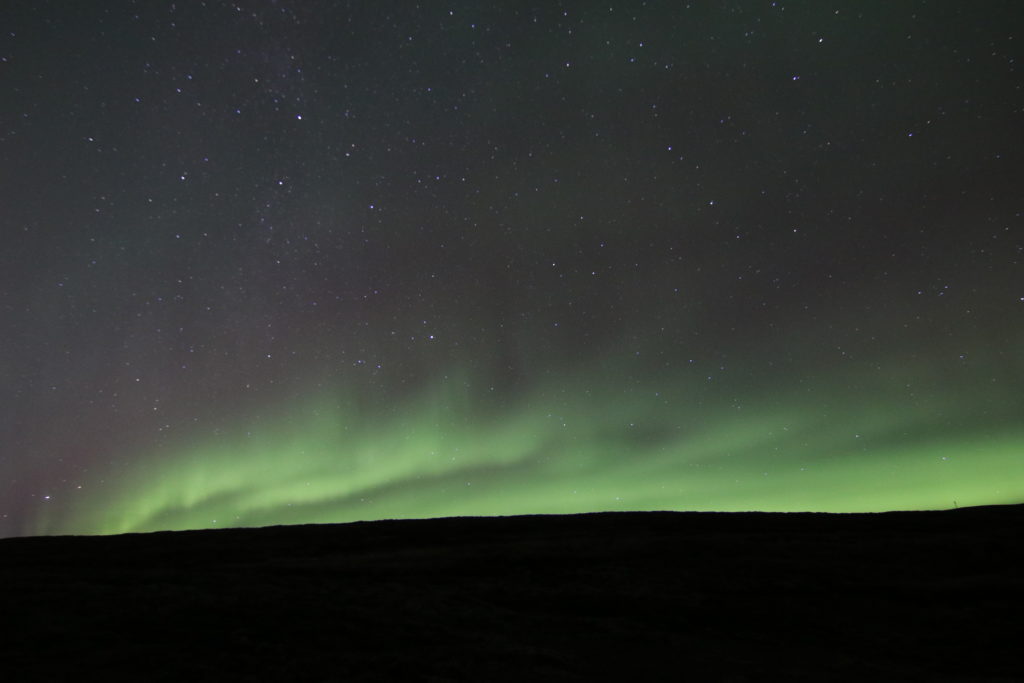
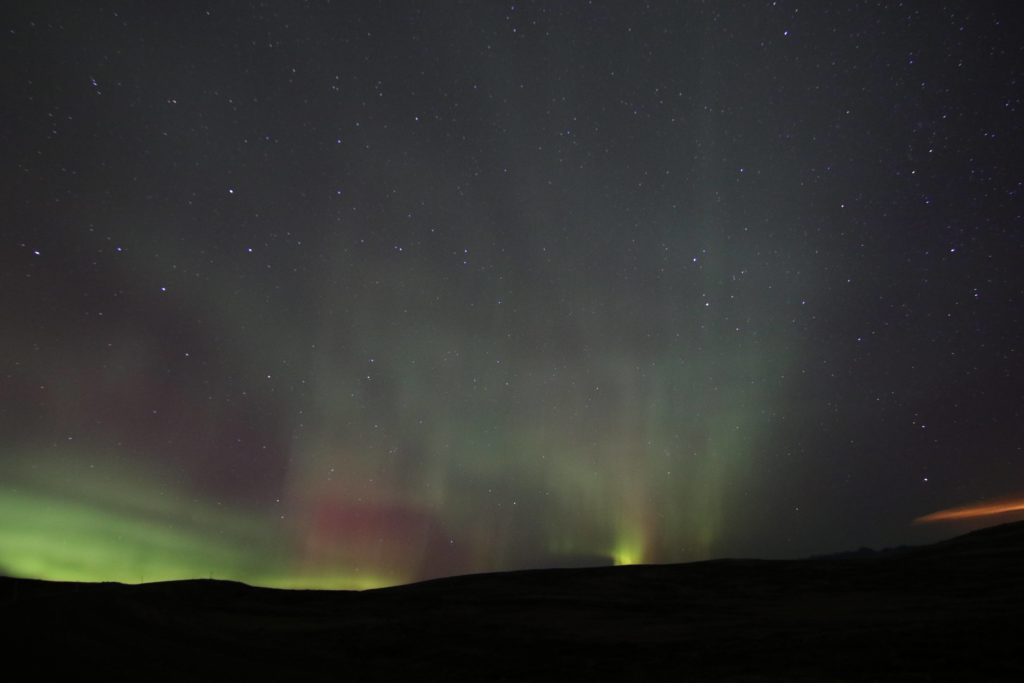
Northern Lights
If you’re in Iceland in the winter, chances are one of the reasons is to see the Northern Lights. I was lucky, but I know more people who have been to Iceland and not seen them than who have, so don’t pin all your hopes on them. Nonetheless, here are a couple of tips:
- Check what the moon is doing. I can’t take credit for this tip, it comes courtesy of Meghan. But it makes sense that the lower the light from the moon, the better the chances of seeing the Northern Lights. So try to go around the new moon rather than full moon.
- I booked my Northern Lights tour for the day I arrived in Reykjavik. It made it a long day, but there was a method to my madness. Pretty much all tour companies will allow you to rebook for another night if you don’t see the Lights. As many times as you need. So don’t save this excursion for the end of your trip and you will have the maximum number of days.
I went with EastWest Tours and highly recommend them. The group size is small: a max of about 15. This makes it easier to get off-road, and also means that the guide, who doubles as a photographer, has time to get a good snap of every group. I don’t know if all companies provide professional photos but it’s definitely worth it, newer phones seem to do well with the aurora but otherwise you will need a tripod to get photos of your own. EastWest also give you hot chocolate and pastries, and blankets if you’re chilly.
A final note: the colours are much more visible in photos than to the naked eye. Having someone else take the photos means you can just relax and enjoy the experience and not worry about looking at it through a screen.
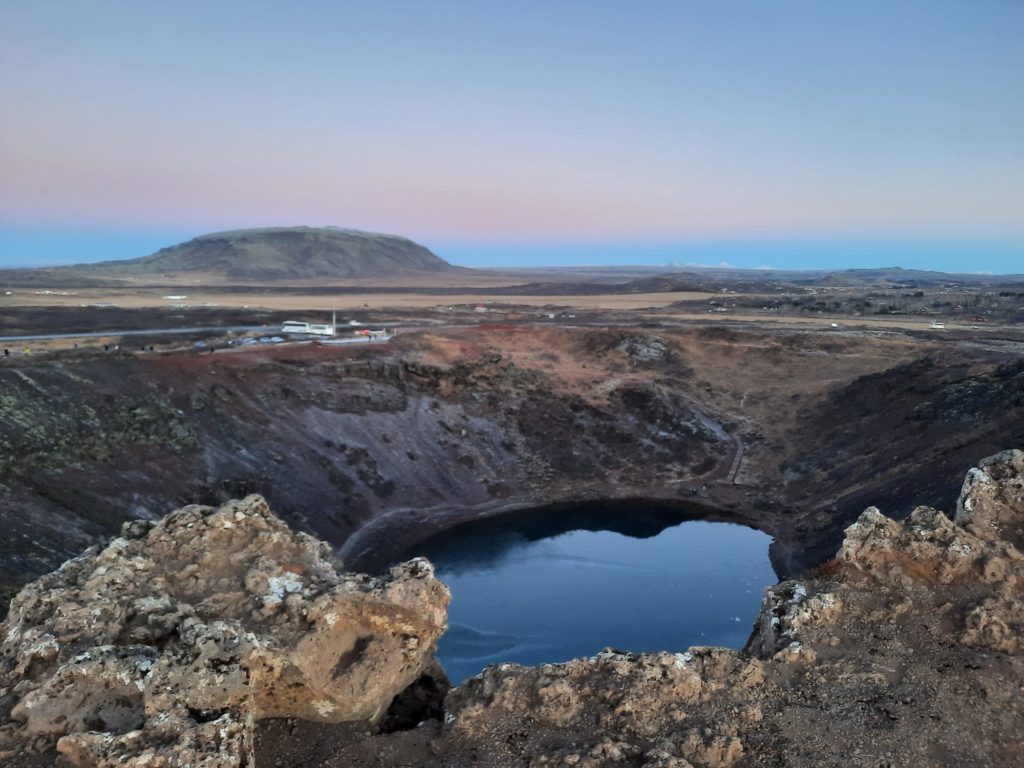

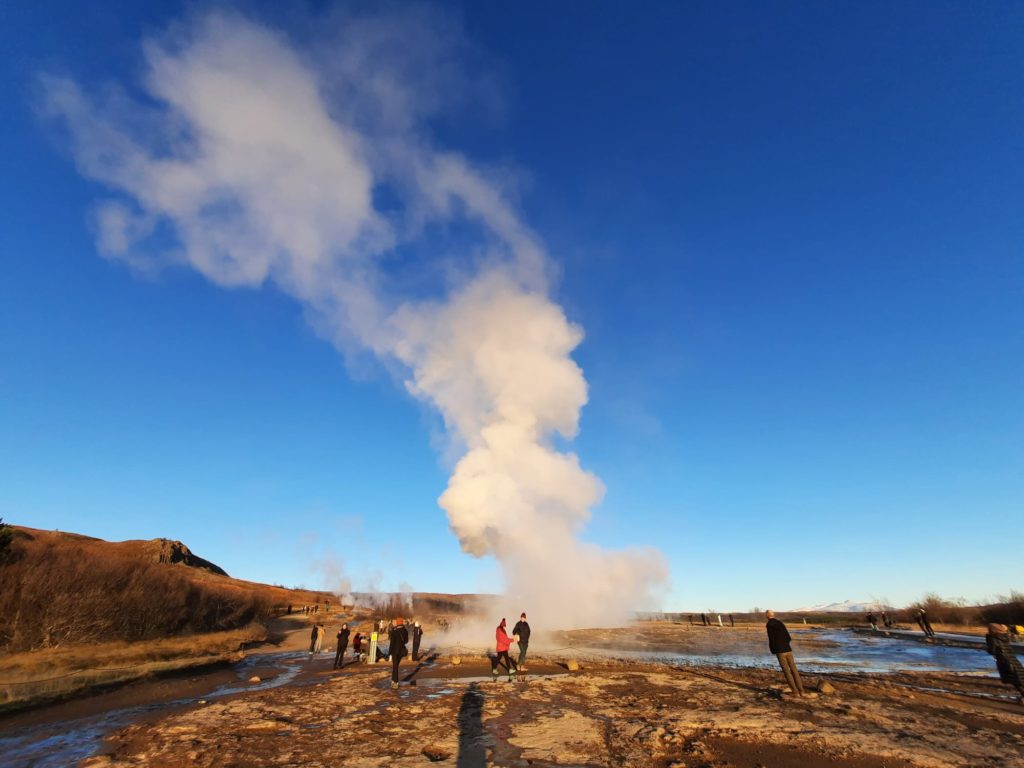
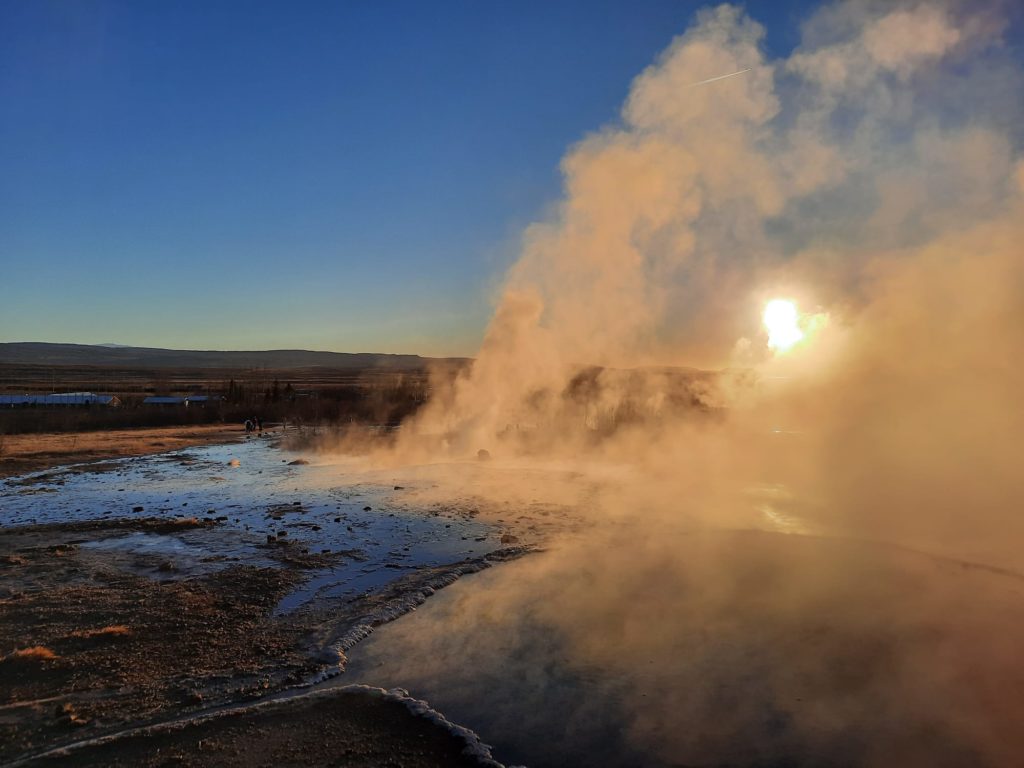
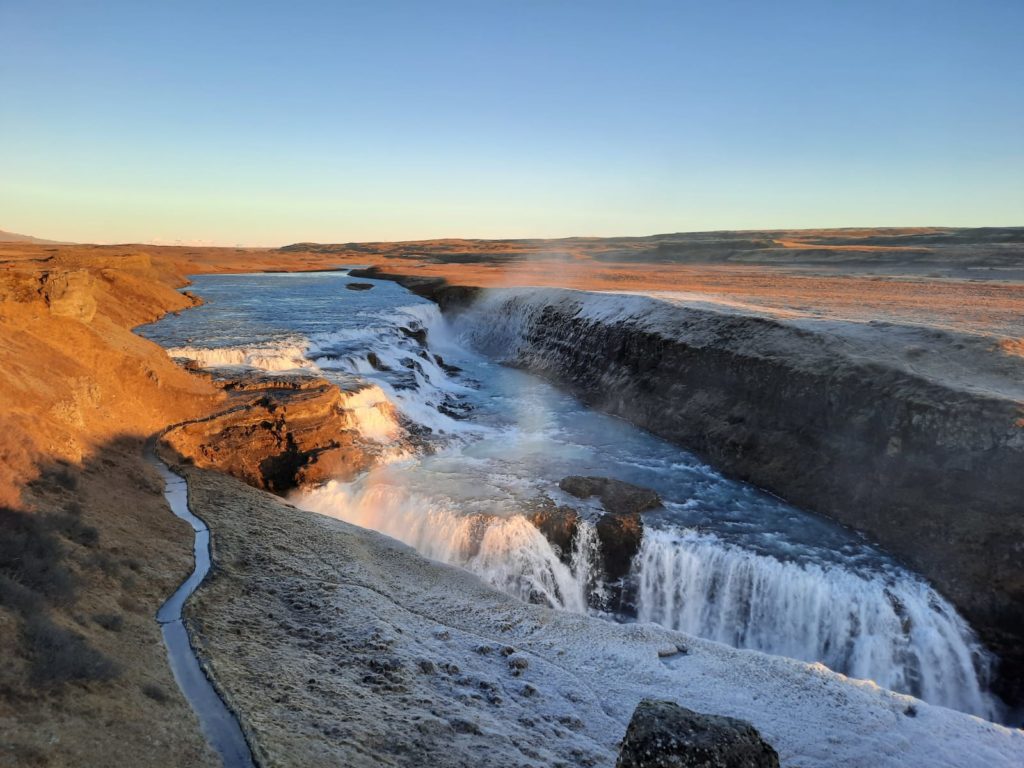
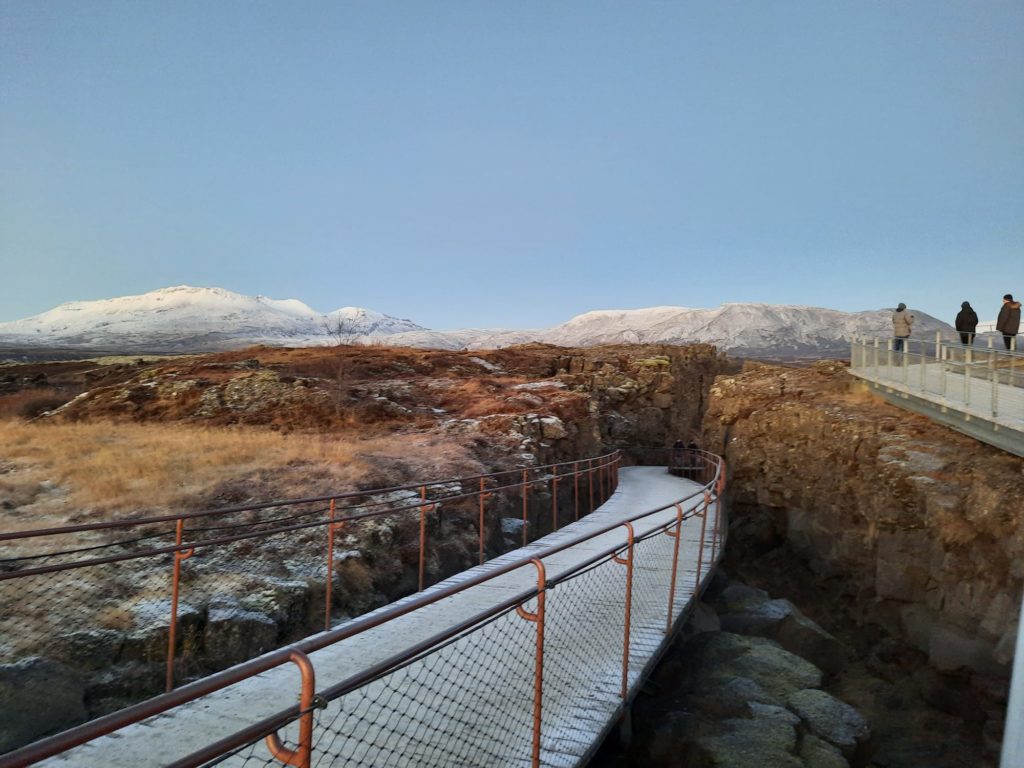
Day Trip Ideas From Reykjavik
On a long weekend in Reykjavik, you will probably want to reserve a day for an excursion out of the city. There are no shortage of options. The vast majority of the country is uninhabited and you can hardly turn around without tripping over a waterfall, geothermal area or other beautiful view. To go back to a point I made at the start, the low sun in late November makes everything look even more stunning. It’s like you’ve stepped into a calendar.
The traditional daytrip is the Golden Circle, a 300 KM route of some of the most popular attractions. It’s closely associated with the history of tourism in Iceland, which goes back to the 19th Century when the rise of leisure activities began to attract more visitors despite the inaccessibility of the landscape. The Golden Circle has a little bit of everything: craters, hotpools, geysers, waterfalls and Þingvellir (Thingvellir), a national park which features Iceland’s (and the world’s) oldest parliament plus the joining point of the North American and Eurasian tectonic plates. Not bad for a day’s touristing!
I did a variation of the Golden Circle which involved a nice long soak in the Secret Lagoon, a hotpool fed by a naturally boiling spring. I didn’t go to the famous Blue Lagoon as I ran out of time, but this peaceful alternative was really lovely. If a different tour takes your fancy, I really don’t think there are any bad options so just go with whatever fits your schedule and your appetite for adventure!
If you see this after your page is loaded completely, leafletJS files are missing.

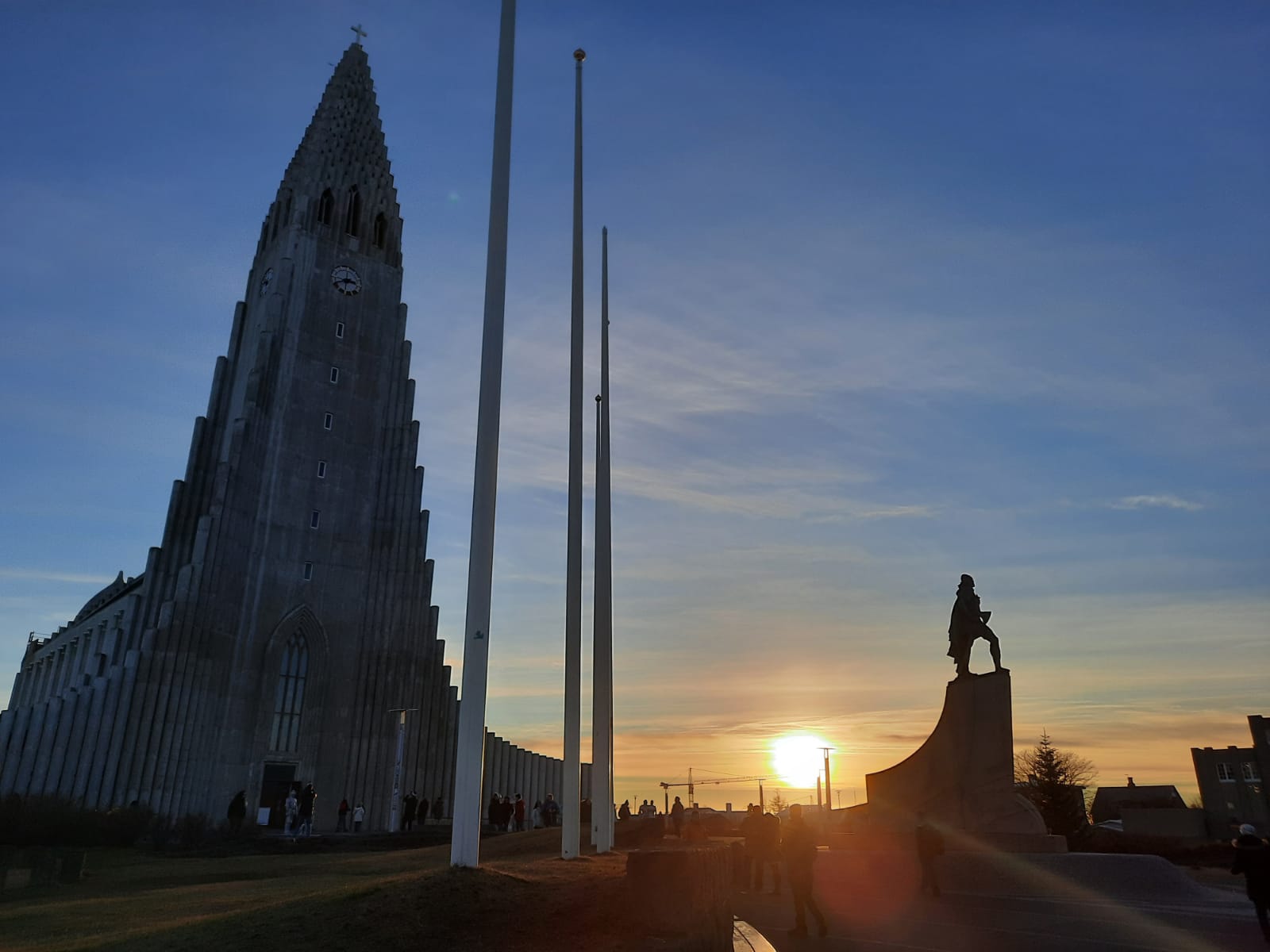
3 thoughts on “Reykjavik For Culture Lovers – A Long Weekend Guide”